
















Canada’s supply chain overhaul could reshape FDI, with nearshoring and tariffs redefining its role in global trade.

short on job or investment targets? Incentive compliance is tightening.




From Greensboro to Brownsville, the U.S. is seeing a new wave of aerospace manufacturing activity. This feature examines the regions driving that growth, profiles recent mega-deals, and offers site selectors a roadmap to the industry’s future.
As EV momentum slows and tariffs rise, automotive companies are reworking supply chains, production plans, and location strategies to adapt to a rapidly changing market
52 Investors
Food-Focused
Food proves to be more than a staple—it’s a safe haven for commercial real estate investors seeking resilience in uncertain times.
Consumer trends and labeling laws are pressuring manufacturers to build flexible, future-ready facilities that can pivot quickly and meet evolving market demands.
Art and cold storage in Chicago Inside a coffee creamer hub in AZ Mississippi’s space infrastructure Landing a lithium refinery in OK
A Note on AI in our Magazine At Area Development, we use AI tools to support—but not replace—our editorial process. We employ AI for copy editing, style checks, and condensing transcripts, always under human supervision. We do not use AI for independent fact gathering or unsupervised content creation. All reported content is reviewed by experienced editors to ensure accuracy, integrity, and journalistic quality.

This issue arrives at a time when every sector we cover is in motion.
The forces at play — technology shifts, policy changes, and supply chain realignments — are rewriting the rules of competition.
In aerospace, shifting defense and commercial priorities are reshaping supply chains — and site selection now demands as much agility as engineering skill. In automotive, Greg Burkart examines a market being pulled in multiple directions by electrification, consumer trends, and policy shifts.
On the manufacturing floor, the changes are just as sharp. Scott Kupperman looks at how food labeling trends — influenced by consumer health concerns, regulatory pressure, and even the rise of GLP-1 medications — are prompting companies to rethink production lines and packaging strategies
Gregg Healy and J.C. Renshaw widen the lens, charting supply chain volatility that’s forcing real estate and operations teams to make faster, more complex decisions.

Scott Kupperman Founder KUPPERMAN LOCATION SOLUTIONS
Eric Stavriotis Vice Chairman, Advisory & Transaction Services CBRE
Brian Corde Managing Partner ATLAS INSIGHT
Amy Gerber Executive Managing Director, Business Incentives Practice CUSHMAN & WAKEFIELD
Alexandra Segers General Manager TOCHI ADVISORS
Dennis Cuneo Owner DC STRATEGIC ADVISORS
Courtney Dunbar Site Selection & Economic Development Leader
BURNS & MCDONNELL
Stephen Gray President & CEO GRAY, INC.
Bradley Migdal Executive Managing Director, Business Incentives Practice CUSHMAN & WAKEFIELD, INC.
Marc Beauchamp President SCI GLOBAL
David Hickey Managing Director HICKEY & ASSOCIATES
Publisher Dennis J. Shea
dshea@areadevelopment.com
Sydney Russell, Publisher 1965-1986
Events / Business Development Director
Matthew Shea (ext. 231) mshea@areadevelopment.com
Media / Accounts Director
Justin Shea (ext. 220) jshea@areadevelopment.com
Editor Andy Greiner editor@areadevelopment.com
Staff and Contributing Editors
Kimberly Graulein
Amy Matias
Garrison Partridge
Mark Schantz
Steve Kaelble
Circulation/Subscriptions circ@areadevelopment.com
We also step across the border, where Marc Beauchamp outlines how Canada is positioning itself to capture new waves of investment — a signal that U.S. regions must stay competitive, not just with each other, but globally.
The common thread is clear: location decisions today are about far more than square footage and incentives. They’re about resilience, adaptability, and finding the ecosystems that will sustain a business through disruption. That’s why our annual Top States for Business rankings remain essential reading — they highlight where companies are most likely to find those conditions, regardless of sector.
The pace isn’t slowing. Success will go to those who can see change coming, move decisively, and partner with regions ready to move with them.

Andy Greiner
Chris Schwinden Partner SITE SELECTION GROUP
Chris Volney Managing Director, Americas Consulting CBRE
Matthew R. Powers, Lead Site Selection Consultant REDI SITE SELECTION
Scott J. Ziance Partner and Economic Incentives Practice Leader VORYS, SATER, SEYMOUR AND PEASE LLP
Chris Chmura, Ph.D. CEO & Founder CHMURA ECONOMICS & ANALYTICS
Alan Reeves Senior Managing Director NEWMARK
Lauren Berry Senior Manager, Location Analysis and Incentives MAXIS ADVISORS
Courtland Robinson Director of Business Development
BRASFIELD & GORRIE
Dianne Jones Managing Director, Business and Economic Incentives JLL
Joe Dunlap Chief Supply Chain Officer, LEGACY INVESTING
Production Manager Jessica Whitebook jessica@areadevelopment.com
Web Designer Carmela Emerson
Print Designer
Victoria Corish
Business/Finance Assistant
Barbara Olsen (ext. 225) olsen@areadevelopment.com finance@areadevelopment.com
Halcyon Business Publications, Inc.
President Dennis J. Shea
Correspondence to:
Phone: 516.338.0900
Toll Free: 800.735.2732
Fax: 516.338.0100







































































Brad Migdal
Brad Migdal of Cushman & Wakefield specializes in corporate site selection, workforce strategy, and developing innovative solutions for industrial real estate. Page 88
Hector Ibarra, Azad Khan & Sven Gerzer
Hector Ibarra, Azad Khan, and Sven Gerzer of Parker Poe advise executives on foreign direct investment, U.S. expansion strategy, and site selection. Page 80

Marc Beauchamp



Marc Beauchamp, of SCI Global, is based in Canada and advises corporations and governments on FDI strategy, supply chain shifts, and competitive investment climates. Page 78
Brooklin Salemi & Joe Gioino
Brooklin Salemi and Joe Gioino of Newmark advise corporations on industrial site selection, incentives strategy, and manufacturing real estate trends. Page 64

Larry Gigerich


Larry Gigerich, of Ginovus, is a leading advisor on incentives procurement, economic development strategy, and corporate facility decisions. Page 68
Greg Burkart
Greg Burkart of Walbridge specializes in site readiness, incentives negotiations, and complex capital investment strategies. Page 60

Scott Kupperman
Scott Kupperman, founder of Kupperman Site Solutions, focuses on food industry site selection, supply chain optimization, and manufacturing facility development. Page 54
Ermengarde Jabir
Ermengarde Jabir, of Moody’s Analytics, provides economic forecasting and market analysis to guide corporate expansion and site selection decisions. Page 52

Joe Dunlap


Joe Dunlap, of Legacy Investing, leads supply chain and logistics real estate consulting, specializing in automation, industrial distribution, and next-generation warehousing strategies. Page 24
Gregg Healy & J.C. Renshaw
Gregg Healy and J.C. Renshaw of Savills advise global manufacturers on supply chain strategy, site selection, and commercial real estate resilience. Page 22

Jeff Troan


Jeff Troan of Vista Site Selection blends global trade expertise with strategic site selection insight. He has decades of experience advising aerospace and defense related projects. Page 10


































America makes far less aluminum than it recycles and that’s a strategic advantage for EV and aircraft manufacturers
84% That’s how much of U.S. Aluminum comes from recycling, not smelting.
700,000 tons of

EVs use 30% more aluminum than gas powered cars
Recycled aluminum is cheaper, cleaner and made in the USA
Source: U.S. Geological Survey, International Aluminium Institute, The Aluminum Association, U.S. Department of Energy
$4 billion – that's how much is being invested to grow U.S. aluminum manufacturing and recycling














































By Jeff Troan Partner & Managing Director at Vista Site Selection
One of the pillars of the Trump administration has been a desire to rebuild the shipbuilding and repairing business in the United States. This echoes earlier concerns raised by the U.S. Navy (which must build and repair all its ships in the United States) about the lack and age of the country’s shipbuilding and repair infrastructure.
In response, the White House recently issued an executive order to establish Maritime Prosperity Zones (MPZs) across the United States. The approach is similar to the Federal Opportunity Zone program created under the first Trump administration. According to the order, the MPZs benefits will be outlined by November 2025.
For those unfamiliar with economic development legislation, zone legislation is enabling legislation. It limits tax advantages and other business incentives to well-defined geographic areas, preventing a broad swath of tax shelters. Once defined, targeted incentives can be applied to the zones, creating a concentrated framework for driving specific economic transformation — in this case, new maritime construction, maintenance, repair, overhaul, and conversion (MROC).
Based on conversations with several states, Vista believes the July 8 deadline is a target for the U.S. Commerce Department to define the criteria for what can constitute
a zone. States will likely follow with proposals for specific geographies. Designing MPZ boundaries promises to be far more complex than the 2018 effort that shaped Federal Opportunity Zones (OZs). That process aimed simply to direct investment into distressed communities, using low-income census tracts as the primary filter. Even so, the census data used was already dated, and the geography of some tracts — particularly university towns — didn’t always align with state and local development strategies. MPZs, by contrast, must start at ports and reach back through the national maritime supply chain — an infrastructure network that stretches across all 50 states and Puerto Rico. The zones will need to capture inland hubs like Crane Naval Surface Warfare Center in Indiana, as well as heritage contractor facilities and small businesses that support both the U.S. Navy and commercial shipyards. Vista is currently developing AI algorithms to help identify these qualifying geographies and assist states in making their final designations. For private industry, rebuilding the commercial shipbuilding and MROC sectors presents a high-risk proposition. Success will depend heavily on how the MPZs are drawn and the nature of the incentives offered. By contrast, military-related shipbuilding offers a more stable path. For more than a century, U.S. commerce has relied on naval dominance and the freedom of global maritime movement. Allowing that control to shift to
China or Russia would disrupt both American and global trade. As the world grows more unstable, the need for a larger, more active Navy becomes increasingly certain.
With that in mind, shipbuilding and MROC firms would be wise to structure new infrastructure investments around military business as a reliable foundation — then gradually layer in commercial capacity over time. This dualtrack approach benefits the Navy as well. Military demand fluctuates. Commercial work could help fill production gaps and sustain the skilled workforce needed to scale when military orders surge.
So what should MPZ incentives actually include? The executive order hints at a structure similar to the 2018 OZ program. Those incentives were threefold: First, a qualified investor could place capital in a Qualified Opportunity Fund (QOF) and defer unrelated capital gains for up to a decade. Second, the deferred gains qualified for a 10 to 15 percent tax discount. Finally, after 10 years, QOF owners could sell their businesses without paying federal long-term capital gains. That model worked well for startups seeking equity capital, and for founders hoping to cash out post-growth without triggering tax liabilities. However, it was far less useful for legacy companies that used internal capital and never planned to spin off the QOF entity.
That kind of incentive structure would fall short in the context of MPZs. Shipbuilding and MROC are capital-intensive
sectors led by long-established firms. While there is room for startups — particularly in emerging maritime technologies like sea and subsea drones — the sector needs something closer to the New Markets Tax Credit (NMTC) program.
Ideally, MPZs would offer a salable federal tax credit, modeled after NMTC but without requiring Community Development Entity intermediaries. In this structure, both startups and heritage companies would receive a tax credit in return for infrastructure investments within MPZs. They could use the credit against their own federal tax liability or sell it to other high-liability taxpayers at a discount.
Additional tools could further encourage ship construction and MROC work in U.S. ports. For example, MPZs might include a temporary tariff waiver on cargo shipped by vessels that were built, significantly overhauled, or converted domestically.
Ultimately, MPZs have the potential to revitalize U.S. shipbuilding and MROC for both commercial and military purposes. But the window to influence these zones is closing fast. Once the U.S. Commerce Department and the states finalize boundaries and incentives, companies left outside those lines will face serious disadvantages. If the federal government follows precedent, there will be no opportunity to revise the zones after they’re set.
Now is the time to take action. Make sure your existing operations — and your future plans — fall within potential MPZs.

































































By Amy Matias Area Development Staff
In the heart of Chicago’s Central Manufacturing District, a once-vacant industrial site is being transformed — not just with concrete, steel, and insulation, but with color, storytelling, and soul.
Karis Cold’s latest development, Stockyards Cold, is a nearly 100,000-square-foot cold storage facility that delivers on all the core requirements of modern cold chain logistics: 50-foot clear heights for dense pallet storage and automation, blast freezing capabilities for rapid throughput, advanced temperature monitoring, and roughly 14,500 pallet positions across customizable zones. Strategically located near two major highways, it’s built for both last-mile delivery and regional logistics.
But what makes Stockyards Cold truly distinct in a national landscape of boxy warehouse facilities isn’t hidden behind the loading docks — it’s right out front, emblazoned across the building’s insulated exterior.
Twelve large-scale murals by internationally recognized artist David Banegas now grace the building’s facade, turning a next-generation logistics hub into a vibrant public landmark. The murals celebrate iconic moments and places in Chicago’s history, from the Art Institute lions to the White Sox scoreboard, from the Water Tower to a visual resurrection of the long-demolished Continental Can Company tower that once occupied the same site. “The first time I came to
the United States, I came to Chicago,” Banegas said. “This is my home in many ways. These murals represent a shared vision — and my old stomping grounds.”
Born in Bolivia, Banegas first came to Illinois as a teenage exchange student and has gone on to paint largescale works around the world. Still, he considers this one of his most meaningful projects — both because of its location and its unlikely setting.
“Each mural is about 20 feet tall. You’re painting on cold storage insulated panels, which is not like painting a regular wall,” he explained. “They had to specially treat the walls so the paint would adhere without compromising the insulation. That’s not easy — and not cheap.”
To make the public art possible, Karis Cold worked closely with Banegas and design-build contractor DSI, which modified the cladding and prepped the surface for long-term outdoor durability without affecting the building’s thermal performance. The murals are expected to be completed in early July 2025.
“We didn’t just slap art on a wall,” said Ken Verne, vice president of assets at Karis Cold. “We wanted to make a statement. This isn’t just a box. It’s a landmark.”
Beyond its design and art, Stockyards Cold also reflects a broader trend in industrial real estate: developers pursuing urban infill projects that balance performance with visibility, making logistics hubs part of the communities they serve.
The project represents a different kind of thinking in industrial real estate, where aesthetics are often sacrificed in the name of speed, scale, and cost. But for Karis, the decision to integrate art wasn’t an afterthought — it
was part of a broader vision for “purpose-built, peopleconscious” development.
“This is a leap forward,” Verne said. “Not just for cold storage in Chicago, but for how we approach integrating functionality and placemaking. It’s like comparing a foam cooler from the ’80s to a Yeti. And David’s work brings a layer of identity that’s rarely seen in industrial development.”
The location is equally strategic. The Central Manufacturing District is one of the oldest planned industrial parks in the country, dating back over a century. Its legacy as a hub for factories and logistics made it an ideal setting for an infill redevelopment that nods to the past while building for the future.
Karis Cold acquired and cleared the long-dormant site, replacing the original Continental Can Company facility with new infrastructure tailored to high-volume food, grocery, and pharma logistics users. Stockyards Cold is currently co-listed by NAI Hiffman and Food Properties Group, and has drawn active interest from a mix of tenant users and investment groups.
The building is expected to be fully turned over by mid-August 2025, aligning with the anticipated mural completion. According to Karis, the goal is to position the facility not only as a functional asset, but as part of a broader effort to humanize industrial environments — especially in urban infill locations where residents and workers engage with these buildings daily.
For Banegas, the opportunity to contribute to that effort was personal — but also philosophical.
“Industrial buildings are often the backdrop of a city, but they don’t have to be invisible,” he said. “This
project shows what happens when you bring emotion and memory to the walls.”
For the team at Karis, it
may not be the last time they do so.
“This worked because the community, the artist, and the builder all understood what we were trying to do,” Verne said. “It’s something we’re proud of — and something we might replicate again.”
By Kimberley Graulein Area Development Staff
When Nestlé USA began evaluating potential sites for a new beverage manufacturing and distribution center, the company wasn’t just looking for space—they were looking for speed, flexibility, and longterm sustainability. Glendale, Arizona delivered all three.
In January 2025, Nestlé officially opened a $675 million, 630,000-square-foot facility that now produces more than 50 flavors of Coffee mate®, natural bliss®, and Starbucks® creamers. The project created 300 jobs and positioned Nestlé closer to West Coast customers—but what makes it stand out is how advanced the facility is, and how quickly the city helped bring it online.
From the start, Nestlé designed the Glendale facility with flexibility and precision automation in mind. According to city building official Djordje Pavlovic, the plant can switch between dozens of flavor profiles with minimal downtime, thanks to an internal sanitary piping system and



























A ROBUST NETWORK THAT FULLY CONNECTS YOUR SUPPLY CHAIN






/ 700+ RAIL-SERVED SITES
/ SERVICE IN 22 STATES









/ 19,200 MILES OF NS TRACK
/ 260 SHORT-LINE PARTNERS







/ BUILT FOR SUSTAINABLE SHIPPING
/ READY TO POWER YOUR BUSINESS

















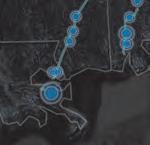




















We offer more than 700 development-ready sites and the expertise to help you grow sustainably with rail. We’re ready to help you build your business for the future. Find your next location at NorfolkSouthern.com.



efficient changeover protocols.
“You throw whatever flavor you want, they’ll make sure that in a week you’ll get that creamer,” said Pavlovic. “They can produce any beverage that they have in that facility with basically just a little bit of the tweaking in the industrial engineering component.”
What’s more, the facility operates almost like a cleanroom. Human activity is limited to designated zones, while an array of autonomous systems handles mixing, filling, bottling, labeling, wrapping, and storing. The building includes a 120-foot-tall automated storage and retrieval system (ASRS) served by robotic vehicles. “Once you get into the manufacturing, the humans are in the part where they actually do their patented mixes,” said Randy Huggins Jr., who managed the project for Glendale during site selection and development. “But then it runs in, when the materials go into the facility, it becomes 100 percent automated.”
Originally, Nestlé had not planned to build its own water recycling system—but when local utility EPCOR raised concerns about sewer discharge limits, the company responded with a game-changing addition: a self-contained water reuse facility.
“They are right now discharging about 5 percent max from the facility,” said Pavlovic. “The rest is being used for air conditioning, cooling systems, and irrigation—so very energy efficient.”
This infrastructure now supports not just the existing operations, but also future expansions already envisioned on the south side of the site. It also reflects Nestlé’s broader
goal to reduce environmental impact across its global footprint.
Nestlé first contacted Glendale through the Greater Phoenix Economic Council and the Arizona Commerce Authority in early 2021. By mid-year, they had selected the site. The city moved quickly—offering an expedited permitting process, phasing flexibility, and creative solutions like an “at-risk agreement” that allowed early construction work on geotechnical foundations.
Glendale also developed a unique “hostage permit” strategy to allow phased occupancy while ensuring remaining site work stayed on track. “We had to make sure that once employees come and start doing their work and testing… we don’t want them to interfere with construction, or construction workers to interfere with the operations,” said Pavlovic.
Glendale’s economic development team wasn’t sure if Nestlé’s would have concerns about proximity to Luke Air Force Base, so they addressed it head on and turned it into an advantage. “The very first thing we did when we met them is we introduced Luke Air Force Base,” said Huggins. “We invited Nestlé and Luke to meet us at the Luke Air Force Base golf course, and we talked about the ways the two could actually partner.”
Through the Department of Defense’s SkillBridge program, airmen transitioning out of service—as well as their spouses and family members—are now being connected to manufacturing roles at the facility.
From automation and
water reuse to workforce integration and speed to market, Nestlé’s Glendale plant represents more than a capital investment—it’s a blueprint. From automation and water reuse to workforce integration and speed to market, Nestlé’s Glendale plant represents more than a capital investment—it’s a blueprint. And as the company eyes future expansion on the site, Glendale is proving that advanced manufacturing, sustainability, and smart permitting aren’t mutually exclusive—they’re mutually reinforcing. In an era of global uncertainty, this kind of alignment may be the most innovative strategy of all.
By Garrison Partridge Area Development Staff
Mississippi’s Hancock County is proving that the next giant leap in space exploration might not come from Silicon Valley or Cape Canaveral—but from a deepwater port town on the Gulf Coast. At the heart of the resurgence is NASA’s Stennis Space Center, a Cold War-era rocket testing facility now being repositioned as a launchpad for commercial innovation.
Long known for testing engines that powered the Apollo missions, Stennis is undergoing a transformation. Thanks to companies like Relativity Space—backed by $267 million in new investment—Stennis is now a proving ground for AI-powered manufactur-
ing, 3D-printed rockets, and next-gen propulsion systems. But what’s happening in Hancock County goes well beyond a single company.
“This is a new chapter for us,” said Blaine LaFontaine, executive director of the Hancock County Port and Harbor Commission. “We’re shifting from a purely federal operation to a blended model that includes commercial space companies building, testing, and staying right here in Mississippi.”
Relativity’s lease of the historic E-2 test stand in 2023 marked a turning point—not just for the company, but for the region. It signaled that aging infrastructure at Stennis could be revitalized, not razed. Until recently, many facilities at the space center sat underused or at risk of demolition, victims of federal belt-tightening and a lack of dedicated NASA missions.
Now, those assets are being handed over to commercial tenants who can move fast, invest heavily, and pay taxes locally.
“The old NASA model didn’t allow for investment—much less maintenance—of facilities without an active mission,” LaFontaine explained. “But commercial companies bring their own missions. They’re breathing new life into places we were in danger of losing.”
Rocket Lab has also announced plans to operate at Stennis, joining Relativity and others as part of a broader ecosystem. These companies bring new jobs, new taxable property, and the kind of momentum that can transform a local economy.
But revitalization doesn’t
happen by accident. Hancock County is doing the hard work behind the scenes— working with NASA to renegotiate long-term leases, ensuring infrastructure upgrades, and preparing new sites for future tenants.
“We’ve got power infrastructure that used to be considered excessive,” LaFontaine said. “Now it’s a major selling point for testing and manufacturing propulsion systems.”
By expediting lease negotiations and pre-permitting land near the center, the county is making it easier for companies to set up shop quickly—and stay for the long haul. LaFontaine’s team is also coordinating with utility partners to ensure pad-ready development and co-location potential. The long-term vision? A vertically integrated space corridor where companies can test, assemble, and ship from a single footprint.
The workforce piece is also evolving. The region boasts a strong base of skilled technicians from decades of federal aerospace contracts and defense work. But there’s still a gap in engineering talent—especially in specialized fields like propulsion and space systems.
To close that gap, Mississippi is investing in a new junior college aerospace program and other workforce pipelines. The state is also working to attract aerospace degree holders through incentive packages, partnering with universities to build a deeper talent pool.
“There’s already a strong manufacturing base here,” said LaFontaine. “Now we’re working on the next step—making sure these companies can find the
engineering talent they need to grow.”
The stakes are high. With competition mounting across the U.S.—from Florida’s Space Coast to the Mojave Desert—Hancock County is betting that its infrastructure, workforce, and forward-thinking leadership can carve out a permanent place in the new space economy.
And the shift isn’t just from public to private—it’s from backend testing to full-cycle aerospace manufacturing. For decades, Mississippi tested engines made elsewhere. But the future could involve designing and building those systems locally, then testing and shipping them straight from the Gulf Coast.
“If we can get this right,” LaFontaine said, “ten years from now, we’ll be known not just as a test site, but as a commercial launchpad for America’s space future.”
By Amy Matias Area Development Staff
When Stardust Power went looking for a site to build its $1 billion lithium refinery— one of the largest proposed in the U.S.—it needed land, logistics, and labor. What it found in Muskogee, Oklahoma, was something more rare: a city that had quietly built the kind of alignment
between infrastructure, incentives, and workforce that could support not just a project, but a long-term industrial strategy.
The refinery will create 300 jobs and produce batterygrade lithium crucial to the EV and energy storage supply chain. But the real story isn’t just about lithium—it’s about how Muskogee pulled together the pieces to win the deal.
Muskogee already had strengths in its corner. The selected site at Southside Industrial Park West offered rail access and proximity to I-40. The Port of Muskogee emphasized the region’s multimodal advantages, including barge access via the McClellan-Kerr Arkansas River Navigation System.
But what tipped the scales was the willingness to invest in targeted infrastructure. The city and county created two Tax Increment Financing (TIF) districts to fund major upgrades: one to improve a key industrial road corridor, and the other to rehabilitate the long-dormant Midland Valley Branch Line, bringing it up to federal standards and reconnecting it with Union Pacific.
“These improvements benefit Stardust Power—but they also position us for future industrial growth,” says Heather McDowell of the Port of Muskogee.
While infrastructure helped land the site, Muskogee’s most forward-thinking move may be on the workforce side. Alongside partnerships with Oklahoma State University Institute of Technology and Indian Capital Technology Center, the Port is launch-
ing a program called Elevate 18—a five-week training initiative for high school seniors who want to go directly into the workforce.
The program teaches safety, soft skills, and manufacturing basics to prepare students for entry-level industrial work. “We’re meeting students where they are—and building a workforce that stays rooted here,” McDowell says.
In a sector where talent is often imported or retrained mid-career, Muskogee’s focus on pre-college talent development offers a local-first model others could follow.
Even with the right infrastructure and workforce, major industrial projects often face public resistance. Stardust Power leaned into transparency—attending community meetings, responding to questions, and partnering with local emergency services to discuss safety protocols.
They’ve also committed to exceeding environmental regulations, including dust control and fire suppression systems, and have become early sponsors of local events and workforce programs.
“They’re not just building a plant,” McDowell says. “They’re becoming part of the community.”
The Stardust deal may be remembered for the lithium, but the innovation lies in how Muskogee moved as one. Infrastructure, education, business, and government came together early, with a shared sense of purpose.
“When those pieces align,” McDowell says, “you can win projects that change your future.”
Lunar industrialization will play a key role in building a trillion-dollar private space economy. Astrobotic delivers payloads to the Moon and has a plan to develop it. We sat down to discuss site selection on the Moon, Earth-based supply chains, and why Pittsburgh has an edge in the space economy.

Area Development: In terrestrial site selection, proximity to infrastructure, resources, and talent drives decisions. What makes a location on the Moon strategically valuable?
John Thornton: When you go to the Moon, it’s basically going to a new world. You want to set up near resources so you can live off the land. Right now, the most important resources are sunlight and water ice.
The Moon’s equator only gets 14 days of light, 14 days of darkness. But at the poles, some areas receive near-continuous sunlight—great for solar power. Shadowed craters near the poles harbor water ice, which can be turned into drinking water, oxygen, or split into hydrogen and oxygen for rocket fuel.
You also want a flat, safe landing area. And if you could find a cave near sunlight and water ice, that would be ideal—it offers natural shelter from radiation and temperature extremes.
You’ve said space will soon be a trillion-dollar industry. How does that growth translate into real-world activity?
Thornton: The global space industry just hit $600 billion. It’s expected to reach $1 trillion by 2040—or even 2035. Most of that today involves satellites—for imaging, communications, internet, TV, and
radio. That’s helping drive down launch costs, which is opening new frontiers like the Moon.
The next phase is about building reliable, routine access to the Moon. Then comes resource scouting and eventually extraction at scale—for use in space and possibly back on Earth.
Back on Earth, where are the key manufacturing hubs for the space industry?
Thornton: The major U.S. hubs are Texas, California, Colorado, Florida, and Ohio. These regions often develop around NASA centers or Space Force sites—they create a strong space culture and innovation ecosystem.
Pittsburgh is more of an exception. It doesn’t have as much traditional space
activity, but that’s an opportunity. We’re tapping into the region’s strengths in AI and robotics to bring new technology to space.
What gives your Pittsburgh facility an advantage?
Thornton: Pittsburgh still has a strong advanced manufacturing base. Our lander is 99 percent sourced for machined parts in the area. We’ve also built a strong supply chain for avionics and other components.
We have a class 10K clean room where we build our landers. It’s standard in aerospace but unique for Pittsburgh. And we’re fueled by top-tier tech talent from Carnegie Mellon, Pitt, and Penn State.

Does this point to a shift—where tech acumen is becoming as critical as traditional aerospace skills?
Thornton: They go hand in hand. New tech pushes manufacturing to its limits. Advanced components need advanced methods. So tech development and manufacturing have to be co-developed.
Let’s return to that ideal Moon site— near sunlight, ice, and a cave. What does development look like there?
Thornton: Humans would likely live underground, in a cave, for protection. Robots would operate on the surface. Power would come from solar panels placed on peaks of persistent light. Over time, nuclear may play a role, but solar will likely dominate early due to cost and simplicity.
Robots would extract water ice from shadowed craters—using reflected light, power cables, microwaves, or cold fingers. That water would be stored and converted into fuel to support travel to lunar orbit, Earth, or even Mars. The
Moon becomes a gateway to the rest of the solar system.
Would launching from the Moon require a major infrastructure build?
Thornton: The Moon’s gravity is onesixth of Earth’s, and it has no atmosphere. So you don’t need aerodynamic vehicles, and you don’t need as much fuel. You could launch from a crater. It’s very different from launching here—and far more efficient.
How soon could we see infrastructure or mining operations on the Moon?
Thornton: Right now, we’re focused on reliable delivery through NASA’s Commercial Lunar Payload Services (CLPS) program. That success will spur demand—for science, then for commercial activity.
If there’s political will, infrastructure could begin this decade. Mining and large-scale use of lunar resources is likely a few decades out—but we need to start now, and some of that work is already underway.



Is the U.S. ahead or behind internationally?
Thornton: I believe China is ahead. They’ve had more successful Moon landings in the last decade, including the first on the far side. They’re discovering materials we didn’t know existed and are moving aggressively on infrastructure and resource exploration.
The U.S. has strong pieces in place, but CLPS is funded at around $250 million annually, a small slice of NASA’s $25 billion budget. We need more missions, bigger robots, and a real push for permanent infrastructure.
Is adaptability still key in lunar manufacturing?
Thornton: Absolutely. Each mission teaches us something new. Until we reach routine, commercial lunar operations, we need flexible, adaptable facilities.
But we’re moving in that direction. You’ve seen it with rockets and satellite constellations. The Moon is next. Longterm manufacturing at scale is coming.

JLL recently launched an Advanced Manufacturing group to meet the moment, and Area Development spoke with group leaders Greg Matter, Vice Chair for Site Selection and Industrial Leasing, and Meaghan Elwell, Division President of Global Industrials, to get their real estate playbook for the new era. This conversation has been edited for space and style; listen to the entire conversation on AreaDevelopment.com
Area Development: Why now? What makes this moment different for manufacturing site selection?

GM: There’s been a decade of talk about reshoring and regionalization, but the last four years made it real. First it was clean energy. Now it’s national security. Clients aren’t just interested — they’re under pressure to get to market fast. That speed has exposed how limited our existing site and power infrastructure really is.
Area Development: How is that pressure playing out inside the facilities themselves?

ME: Many of our clients are in plants that are 50+ years old. We’re still maintaining pre-WWII boilers. So, when a company wants to expand or modernize, they’re not starting from scratch — they’re patching systems and racing the clock. What they often need is a capital strategy that prioritizes uptime and innovation.
Area Development: So greenfield isn’t always the answer?


ME: Not unless you have three years to wait. We’ve seen clients adapt spec logistics buildings into advanced manufacturing with some structural upgrades — new slab, added power. It’s faster than building new and offers better flexibility than most aging manufacturing stock.
GM: The average age of our manufacturing buildings nationally is 55 years old. Several of the top infrastructureready buildings got picked off fast after the Inflation Reduction Act. Since then, everyone else has had to get more creative — or more patient.
Area Development: What makes a site “ideal” right now?

GM: We use a simple framework: people, place, and power. That’s your scorecard. If any one of those is weak — labor, ecosystem, or energy — the project is going to struggle.
Area Development: What’s the biggest blind spot you see among corporate leaders?


GM: Underestimating the timeline. CEOs often think of site selection as a six-month decision. It’s not. Grid capacity, workforce pipelines, permitting — these things don’t happen on executive timelines unless you start early.
ME: And not considering the people on the plant floor. There’s been so much focus on corporate return-to-office amenities. Meanwhile, your operators never left. Break rooms, outdoor access, lighting — if you want to retain skilled labor, the facility has to support them, too.
Area Development: Has the Inflation Reduction Act changed the game for your clients?

GM: Absolutely. It triggered a frenzy for existing sites with infrastructure in place. The best power-ready buildings got picked off fast. Since then, everyone else has had to get more creative — or more patient.
Area Development: What advice do you give mid-sized manufacturers entering the market now?


ME: Be ready to retrofit. A logistics box with the right bones — clear height, column spacing — might be your best option. Don’t wait for a perfect building. Build your team around the ability to adapt what’s available.
GM: And do your diligence. A site that worked for warehouse use doesn’t necessarily work for your machinery. You might need a 24-inch slab, reinforced roof, or 5,000 amps of power. That’s not plug-and-play. We’re seeing facilities blend solar with storage and traditional grid access to stay flexible and resilient.
Area Development: Let’s go deeper on talent. Are clients thinking enough about workforce development?


ME: Some are. We had a client retraining their entire floor staff to operate CNC routers and laser machines — that’s real transformation. But others still treat labor like a fixed input. That doesn’t work in advanced manufacturing. You need to invest in training, in the workplace experience, and in partnerships with community colleges and workforce boards. We help with that planning, too.
GM: Meaghan’s exactly right. A lot of companies still think labor is a plug-and-play equation. It’s not. You’re either building pipelines in these markets, or you’re going to lose your advantage.
Area Development: Is power availability now a bigger issue than power cost?


GM: Yes. There was a brief pause following the original tariff announcement, but since then the pace has picked up. There’s more competition for the same handful of viable properties.
ME: And the gap is only growing. We’re not building enough modern industrial stock, and what we are building tends to be designed for logistics — not the power or process needs of advanced manufacturing.
Area Development: One innovation that keeps you up at night — in a good way?

GM: AI on the production floor. It’s going to help us bring more work back to the U.S. — better stability, better security, better jobs.
Area Development: Biggest misconception about advanced manufacturing?

ME: That it’s completely different from regular manufacturing. It’s not. It’s still manufacturing — just done smarter. We’re using AI in facilities too — predictive maintenance, better uptime, smarter systems.
For a full transcript and audio of this talk, head to AreaDevelopment.com

By Greater Orlando Aviation Authority
Or lando may be globally recognized as a leisure destination, but corporate leaders are quickly discovering that its airport is also one of the most strategically located and development-ready commercial assets in the country. Orlando International Airport (MCO) is more than a gateway for travelers — it’s a launchpad for business expansion, industrial development, and global logistics.
W ith more than 40 million annual passengers and nonstop flights to key business hubs across Europe, South America, and the Caribbean, MCO already functions as one of the busiest airports in the United States. But what truly sets it apart is its footprint. The airport spans over 13,000 acres, making it one of the largest commercial aviation properties in the nation. While other major airports struggle with land constraints and congestion, MCO offers scale, speed, and flexibility — all backed by a development-friendly governing body in the Greater Orlando Aviation Authority (GOAA).
GOAA is actively marketing developable land across the airport campus — sites suitable for air cargo, maintenance and repair operations (MRO), cold chain logistics, light manufacturing, or even corporate headquarters. With parcels available both airside and landside, companies can tap into global air connectivity and Florida’s growing freight and rail infrastructure in the same location.
Recent projects signal a new era of airport-aligned development. Frontier Airways has expanded operations at MCO, United Airlines has recently invested in a state-of-the-art TechOps campus and new logistics partners are arriving to support the growing demands of e-commerce and international trade. The airport’s proximity to the Space Coast, along with Central Florida’s aerospace and defense manufacturing ecosystem, creates added strategic value for advanced industries that depend on secure, multimodal transportation options.


W hat makes MCO especially competitive for site selectors is the ability to move fast. GOAA has prioritized a proactive, partneroriented approach to commercial development, offering build-to-suit options, permitting support, and real-time coordination across agencies. That kind of responsiveness is hard to come by — especially for companies with complex infrastructure needs or aggressive timelines.
The airport’s land availability also enables long-range planning. Companies that commit today can expand over time without relocating — a key differentiator for firms managing multi-phase industrial footprints or scaling logistics capacity in the face of growing e-commerce and supply chain complexity. MCO is not a landlocked operation hemmed in by growth; it’s a dynamic property with room to evolve.
For companies exploring Southeast expansion, reshoring advanced capabilities, or establishing global logistics hubs, MCO delivers a rare combination of connectivity, acreage, and alignment. And in a market increasingly defined by speed and flexibility, that combination is invaluable. Orlando has long been a place people visit. Now, it’s a place where global companies come to stay.
This story was written with assistance from Area Development’s editorial staff for Greater Orlando Aviation Authority, which sponsored and approved this post.






With over 1000 acres (400+ hectares) of centrally located land available for development, Orlando International Airport (MCO) presents an exceptional opportunity for your growing business.

Customizable Land Parcels Available For
• Aerospace
• Aviation
• Advanced Air Mobility
• Manufacturing
• Office/HQ
• FTZ Operations
• Logistics and Warehouse
• Mixed-Use
A premier aviation destination, Orlando boasts beautiful, yearround weather, an attractive cost of doing business, and a talented workforce in an innovation-based ecosystem.
MCO is Home to Leading Aviation & Aerospace Companies
• Aerospace Manufacturing
• Flight Training
• MRO/TechOps

• AMT Training
• Research & Development
• Simulation




Considering a Future at MCO? Contact Paul Mitchell Manager, Business Development


Orlando International Airport paul.mitchell@goaa.org View Available Parcels


MCO-Real-Estate.short.gy/parcels-ss
By Gregg Healy, Executive Vice President, & JC Renshaw, Senior Supply Chain Consultant at Savills
Manufacturing and logistics executives know uncertainty has always been part of global supply chains. Yet today’s volatility—influenced by dramatic swings in transportation costs, sudden geopolitical disruptions, shifting tariffs, climatological events, and significant energy shortages— is uniquely challenging. These are not theoretical concerns—they are concrete issues directly impacting supply chain companies’ real estate strategies, location decisions, and ultimately their profitability.
Consider ocean freight costs. Container shipping rates have swung wildly from about $3,000 per container to peaks near $30,000, disrupting corporate budgets and forcing rapid adjustments to sourcing strategies. These unpredictable cost changes mean that a facility strategically located one year ago might suddenly become economically unviable the next. When logistics costs spike without warning, even the most efficient facilities can become financial burdens. Geopolitical events such as the Suez Canal blockade, the Ukraine conflict, and tensions in the Middle East have intensified these disruptions, injecting unpredictability into global supply chains and forcing executives to reconsider their long-term facility planning.
Tariffs, too, have played an outsized role in recent volatility. For example, when tariffs soared by 145 percent on goods from China, shipping activity slowed dramatically. Companies paused shipments and re-evaluated sourcing strategies. Then, when certain tariff enforcement windows were paused or adjusted, companies scrambled to front-load cargo ahead of potential changes, flooding ports with inventory and overwhelming distribution capacity. The reaction to trade policy shifts—first halting, then rushing to accelerate—underscores the unpredictability facing executives today.
These abrupt changes illustrate a core challenge: demand signals are no longer consistent or easy to interpret. In addition to the aforementioned supply disruptions and risks, variability in those signals has become the norm. A spike in consumer demand may be fleeting, or it may represent lasting structural change—companies are no longer sure. This introduces real risk to network design and real estate strategy.
COVID-19 was a case in point. Many companies adopted a “just-in-case” approach, adding inventory and warehousing capacity in anticipation of ongoing disruptions. As conditions stabilized, many reverted rapidly to “just-in-time,” releasing vast amounts of leased warehouse space back onto the market. That pendulum swing, driven by demand signal variability, has led to significant misalignments between supply and space utilization.
Subleasing activity, for example, has reached all-time highs. As of Q2 2025, 225.2 million square feet of sublease space was available nationwide—up 3.7 percent from the previous quarter and 25.3 percent year over year, according to Savills Research. Companies are simultaneously offloading excess space in one region while seeking space in another. It’s not just a mismatch of supply and demand—it’s a reflection of how variable demand signals and supply chain risks are influencing strategic decisions.
The real estate market has mirrored supply chain instability. Industrial real estate absorption had been growing steadily in the years leading up to the pandemic, driven by the rise of e-commerce. It then surged during and after lockdowns, as increased consumer spending on household goods combined with supply chain bottlenecks to create a perfect storm. The sudden influx of demand resulted in aggressive construction of industrial buildings, leading to overcapacity. Construction starts peaked in 2022, but many of those facilities came online in late 2023 and early 2024, just as demand began to taper off.
Markets such as Phoenix and Atlanta now face high vacancy rates due to this oversupply, while markets anchored by smaller, localized industrial buildings or very large fulfillment centers remain resilient. Detroit, for example, has maintained a more stable market due to incremental, demand-driven growth. The I-85 corridor between Montgomery, Alabama, and Virginia absorbed over 70 million square feet annually during the peak. But that pace is no longer sustainable, and vacancy rates are rising.
These fluctuations highlight a critical need for executives to reassess and recalibrate their real estate strategies, focusing on precise market timing and flexibility in lease structures Generally speaking, mid-size buildings (200,000 - 750,000 square feet) appear especially vulnerable
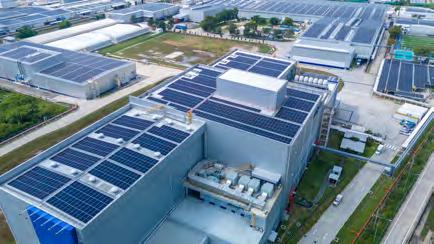
$225.2 MILLION
that’s the number of square feet available for sublease nationwide in Q2 2025
in the current climate due to oversupply. Smaller buildings continue to serve trades, service providers, and last-mile delivery well, and have seen limited recent development. Meanwhile, the supply-demand dynamics for massive e-commerce hubs—often purpose-built for specific users—remains relatively strong. Size matters, but so does specialization.
The current uncertainty has led companies to prefer shorter-term, tactical real estate moves rather than strategic, long-term commitments. An increasing number of firms are turning to third-party logistics providers (3PLs) for their warehousing needs. This approach allows companies to scale operations up or down quickly without significant capital expenditure or long-term obligations, providing much-needed flexibility during uncertain times.
Similarly, foreign trade zones and bonded warehouses have become increasingly attractive amid tariff volatility. These facilities allow companies to defer tariff payments until products leave the warehouse, enabling more strategic timing of market entry and tariff management. Bonded warehousing is not a long-term solution, but it is a valuable mitigation strategy in the current policy environment. Many companies are using this tool to buy time while they assess whether new tariffs will stick or be reversed after election cycles.
Additionally, the trend toward nearshoring is gaining momentum, with Mexico emerging as a favored alternative to China due to lower labor costs and proximity to the U.S. market. Cross-border trade with Mexico, particularly through Texas, has surged dramatically, necessitating increased warehouse and logistics capacity along these routes. The inland port of Laredo now handles more freight than many coastal ports, and demand for industrial real estate in border towns has skyrocketed. Site selectors evaluating locations along southern supply chains are increasingly prioritizing truck access and intermodal infrastructure over traditional port access. However, the 2026 renegotiation of the USMCA looms.
Amid all these supply chain and real estate considerations, one critical but often overlooked factor is rapidly emerging as a decisive siteselection criterion: power availability.
The growth of energy-intensive industries—electric vehicles, data centers, artificial intelligence facilities—has created staggering demand for electricity. In recent years, companies have queued up for about 2.6 terawatts of new power capacity—more than double the existing U.S.
generation capacity. This means that even if a site has ideal logistics, labor, and incentives, a lack of power can disqualify it. Companies are increasingly walking away from attractive deals simply because there isn’t enough electricity available—or it will take too long to bring it online.
Power availability is becoming a filter, not a footnote. Some companies now begin the site selection process by asking utilities for substation and transmission capacity before any other criteria are reviewed. In power-constrained markets like Northern Virginia, Phoenix, and parts of California, that early disqualification is becoming more common.
Rather than react to disruptions after the fact, executives are beginning to adapt in more forward-looking ways. Some are investing in advanced network modeling and digital twins to simulate future supply chain scenarios and risks. These tools enable organizations to evaluate their current footprint, identify potential bottlenecks, and visualize alternative configurations that optimize speed, resilience, and cost. One client we worked with discovered through digital modeling that their redundant regional distribution network was adding significant (i.e. >40%) transportation costs without improving customer service. By realigning responsibilities among sites and adjusting service areas, they improved efficiency and freed up capital.
Others are leaning into automation to mitigate workforce uncertainty and handle volume fluctuations more effectively. Unlike labor, which can be difficult to scale up or down quickly, automation infrastructure can be adjusted to meet demand in real time. Investing in automation also allows companies to maintain operations during labor shortages or policy-driven wage spikes. For some of our clients, automation is not just a productivity play—it’s a strategic hedge against volatility.
Finally, companies are making more strategic decisions about location. Instead of pursuing tax incentives or labor alone, many are looking for regions that offer long-term sustainability. That includes rail-served industrial parks, inland ports, and multi-modal hubs. While rail isn’t ideal for all businesses—some see it as too slow or unpredictable—it remains essential for heavy manufacturing sectors such as plastics and metals. Those that rely on bulk raw materials are increasingly seeking rail-connected sites, despite concerns about service predictability.
Today’s heightened volatility underscores a vital truth: companies must evolve beyond simply reacting to disruptions. Those that embrace flexibility, proactively adjust their real estate strategies, and integrate advanced supply chain insights into facility planning will thrive.
Adaptability is no longer a competitive advantage—it is a requirement. Businesses prepared to pivot rapidly and strategically will gain significant operational stability and resilience. The past few years have shown us that supply chains are no longer invisible back-end systems. They are strategic assets, and how companies manage their physical footprint—where they locate, how they lease, how they mitigate risks, and how they plan for growth—will define who wins the next decade.
The key to navigating the current environment isn’t brute strength or mere intelligence—it’s flexibility. As we often tell our clients, the companies that succeed are not the biggest or the fastest. They are the ones most willing to evolve. And in this market, nothing is evolving faster than the intersection of supply chain and industrial real estate.
Embedding automation into leases may offer companies a smarter way to balance risk, cost and productivity
By Joe Dunlap, Chief Supply Chain Officer at Legacy Investing

In my decades of experience providing supply chain network design and operations design, I’ve repeatedly encountered one major challenge that businesses struggle to overcome: balancing the high cost of automation with the pressure to improve productivity, capacity, accuracy, safety and speed, particularly in distribution operations.
Automation’s appeal is clear — companies seek lower cost, faster fulfillment, lower error rates, improved worker safety, and reduced reliance on increasingly scarce labor pools. Yet, implementing automation has historically been prohibitively expensive, causing even sophisticated operations to scale back ambitious plans due to financial constraints. In many cases, companies face sticker shock when presented with a comprehensive automation solution costing tens of millions of dollars, leading them to settle for less-than-ideal compromises.
However, an emerging approach offers businesses a financially savvy way to overcome these hurdles: integrating automation investments into real estate leases. While this model has been around for years in other property types, it is not widely adopted in industrial real estate. It’s gaining traction due to its logical alignment with long-term operational and financial goals.
Typically, companies approach automation investment separately from real estate considerations. A common scenario might involve a manufacturer or distributor first selecting a site and leasing a building. Concurrently, they would contract with consultants or integrators to design and implement automation solutions. Often, these automation systems are financed through short-term equipment loans or funded directly from company capital.
This segmented strategy leads to substantial upfront costs and relatively high short-term financial burdens, as traditional equipment financing terms are usually limited to five years at elevated interest rates. Consequently, the overall cost per unit handled remains high, and the flexibility to scale or adapt can be significantly constrained.
The alternative — and increasingly attractive — model treats automation infrastructure similarly to real estate fixtures like HVAC or lighting systems. This approach bundles the cost of substantial automation systems into the long-term lease of the facility itself, allowing tenants to spread the financial impact over a longer period, typically aligned with real estate amortization schedules of 10, 12, 15, 20 years or more. This lowers the monthly cost compared with other options and creates a long-term, predictable cost forecast with less variability or surprises.















Connecticut is home to Sikorsky, Pratt & Whitney, and hundreds of aerospace firms manufacturing everything from helicopters to jet engines. Nearly ¼ of all U.S. aircraft engines and parts are made here by the most highly productive and skilled aerospace workforce in the world. Quite literally, nothing flies without Connecticut.






This method offers notable advantages. First, companies can avoid hefty initial investments or expensive equipment loans, making automation more accessible even to smaller operations. Second, because automation infrastructure can be amortized over an extended period at lower real estate rates, the total monthly expense is significantly lower than traditional financing options. Third, companies can align their financial strategy with their operational reality. Automation infrastructure embedded into the building lease naturally encourages tenants to plan for long-term use and benefit from operational stability.
Consider a 500,000-square-foot distribution facility scenario with a comprehensive automation investment of $100 million. Traditional financing through equipment loans and real estate leases could result in combined monthly expenses of around $3 million. By bundling these costs into a long-term facility lease, however, companies could reduce monthly expenses dramatically, often achieving a significant internal rate of return (IRR) and substantial net present value (NPV) savings.
From an operational perspective, automated facilities dramatically reduce reliance on large, low-skilled labor pools. For instance, a typical manual fulfillment center might require 800 material handlers and forklift operators across three shifts, while an automated equivalent could achieve the same output with just 80 skilled mechanics, technicians, and programmers. This shift benefits regions facing labor shortages, particularly smaller counties or rural areas that struggle to attract large numbers of manual laborers but can support skilled technical roles.
Naturally, businesses considering this integrated approach must weigh certain risks and practical considerations that come with automation and change. One frequent concern is the adaptability of automation infrastructure to future tenant requirements or changes in product mix. However, because most automated fulfillment solutions for picking and packing operations handle relatively uniform cube for sellable eaches — small to medium-sized items — the likelihood of reuse remains high.

$100 MILLION
that’s the automation investment bundled into a facility lease in one real-world example
Additionally, companies need to plan for technology evolution. Core automation systems like multi-shuttle storage and retrieval solutions have decades-long life cycles, while some peripheral technologies like robotic arms or vision-guided picking systems might need periodic upgrades. A flexible lease agreement that accommodates planned technology refreshes ensures operations remain competitive without incurring massive financial shocks.
W hile automation is sometimes viewed skeptically as a job eliminator, a nuanced view reveals more complex realities. Automated facilities shift labor from numerous lower-paying, manual tasks toward fewer but higher-paying skilled positions such as mechanics, technicians, programmers, and integration specialists. For companies, this labor shift presents a strategic opportunity to reduce churn, elevate workforce productivity, and capture more value from each hire — especially in smaller communities challenged by labor scarcity.
Indeed, far from merely eliminating jobs, automation reshapes them — often leading to increased job quality, improved workplace safety, higher retention, and greater worker satisfaction.
Ultimately, the integration of automation into real estate leases represents a strategic shift rather than just a financial tactic. It aligns business operations closely with long-term financial planning, facilitating smarter capital allocation decisions. For companies, economic developers, and landlords alike, understanding and embracing this model can provide substantial competitive advantages.
As automation continues its inexorable advancement, reshaping industries and redefining economic landscapes, integrating it seamlessly with real estate strategies offers both financial efficiency and operational excellence. It’s not just about managing today’s operational challenges — it’s about strategically positioning businesses and communities for tomorrow’s successes.



























Chad Schneider CEO & Founder, Root3 Labs












From the Port of Baltimore, which allows for really large parts to be imported and exported, to the international airports and main roadways, Maryland is the place to be if you want to be globally connected. you














































By Kimberly Graulein Area Development Staff





Georgia is back on top — again. For the 12th consecutive year, the state has claimed the No. 1 overall ranking in Area Development’s annual Top States for Doing Business survey. While Georgia’s consistency speaks volumes, the real story in 2025 is just how competitive the field has become beneath the surface.
This year’s rankings reflect a rapidly evolving economic development landscape — one shaped by pressure on timelines, power infrastructure, and workforce pipelines. The consultant panel behind the survey made clear that states no longer rise to the top simply by offering low taxes or generous incentives. Today, it’s about execution: how quickly and reliably a state can align land, labor, logistics, and leadership behind a fastmoving project.
That’s a shift from a decade ago, when low costs and business-friendly branding often drove rankings. As the challenges facing manufacturers and logistics companies have grown more complex, the metrics for evaluating a “top state” have evolved in kind. Site selectors today are looking for integrated solutions — energy infrastructure that can scale, workforce systems that deliver talent on demand, and permitting pathways that reduce friction without sacrificing oversight.
This year’s methodology reflects that evolution. For the first time, we’ve split energy infrastructure into two separate categories — “Energy Availability” and “Energy Cost” — to better capture the unique challenges posed by the modern grid. We also continue to elevate the importance of water access, permitting speed, and site readiness — all increasingly make-or-break factors in large capital investment decisions.
The states that perform well aren’t just “pro-business.” They’re aligned. That word —


Partner with a state that understands the importance of preparing your business for the future. Georgia’s pro-business environment and collaborative spirit are just some of the reasons why companies that locate here, expand here.
Learn why people are choosing Georgia at Georgia.org

alignment — came up repeatedly in consultant feedback this year. It’s not enough to have programs on paper. It’s about whether those programs translate into on-the-ground responsiveness across agencies, utilities, and educational institutions. And whether that alignment holds under pressure.
“Our clients’ decisions continue to be guided by three essential pillars: strong access to qualified talent, consistent pro-business policy at both the state and local level, and aggressive site development efforts,” says Alex Miller, manager at KSM Location Advisors.
“ The top-ranked states in this year’s list excel in all three areas, offering companies the predictability, speed to market, and scalability they demand in a competitive global landscape.”
The 2025 rankings again reflect the dominance of the Southeast, with South Carolina, Texas, North Carolina, and Ohio rounding out the top five. But they also spotlight rising performers like Virginia, Indiana, and Michigan, and show sharper distinctions within categories that matter most to consultants today: workforce development,
energy infrastructure, site readiness, permitting, and long-term resilience.
This year’s package breaks down the 14 ranked categories into four editorial themes: Speed, Sites & Permitting; Workforce Wins; Energy, Infrastructure & Resilience; and Business Climate & Government Support. Within each, we’ve woven direct insights from the consultants who guide capital investment decisions every day — those helping companies answer not just where to grow, but why. While the survey data ranks states based on performance, the commentary reveals something deeper: that even among the top states, the bar is rising.
“In today’s evolving economic landscape, predictability is paramount,” Miller adds. “These fundamentals continue to shape corporate expansion decisions and position top-ranked states as enduring leaders in business climate and competitiveness.”
I n the pages ahead, we’ll explore which states are delivering — and what it will take for others to catch up in 2026 and beyond.
For many corporate expansions, the question is no longer where to go — it’s who can move fast enough. In 2025, speed to market isn’t just an advantage. It’s the baseline. As project timelines compress and permitting hurdles grow more complex, states that offer ready-to-go sites, transparent permitting paths, and aligned local coordination are separating from the pack.

Project Ready® Certified Sites. Vetted. Powered. Ready to go.

In today’s world, speed-to-market is everything. Mississippi Power knows that when you’re choosing a new location, you need confidence not questions. That’s why we created the Project Ready® Certified Sites program: to deliver development-ready sites that are thoroughly vetted, risk-free and independently verified by the longest running economic development group in the state.

Discover the power of building in Mississippi.
Available, reliable, affordable power
Mississippi ranks in the top 10 for overall cost of doing business
Customizable contracts & fast-track permitting
Top 5 in logistics — prime SE location with port, rail and interstate access
Explore available sites

Texas takes the top spot for availability of sites, with South Carolina, Georgia, North Carolina, and Ohio close behind. Each of these states has made deliberate investments in land banking, utility mapping, and statewide inventory systems that help consultants and companies quickly evaluate large parcels.
“Speed to market is a key goal for an increasing number of our clients,” says John Boyd, principal of The Boyd Company. “Government — especially planning and zoning units — needs to be responsive and learn to move at the speed of business.”
But having land isn’t enough. States that perform well in site readiness programs go further by proactively clearing hurdles like due diligence, environmental review, and utility extension planning. In this category, South Carolina, Georgia, Tennessee, Indiana, and Ohio rank at the top — each known for strong collaboration among state agencies, utilities, and economic development teams.
States at the forefront are also offering standardized site certification programs, with pre-qualified sites that minimize uncertainty for manufacturers. Several consultants noted that projects with high capital intensity — such as EV battery, semiconductor, or biotech facilities — are particularly sensitive to permitting timelines and utility access. That’s led to greater scrutiny not just of current readiness, but of how quickly infrastructure can be extended or scaled on demand. In some cases, the existence of a fast-track permitting protocol or inter-agency strike team can be a deciding factor.
“ With so many good sites already acquired over the past five years, it is vital for regions and states to identify the next generation of sites to ensure that their areas are prepared for site selection projects,” says Larry Gigerich, executive managing director of
Ginovus. “Companies need to move very quickly once a location decision has been made, and the places that are ready will be the big winners in economic development.”
Permitting remains one of the biggest chokepoints in the development process — but some states are finding ways to turn it into an advantage. Georgia leads the 2025 rankings for speed of permitting, followed by South Carolina, Ohio, North Carolina, and Texas. Consultants praise states that streamline review across agencies, offer point-of-contact case management, and demonstrate a culture of responsiveness.
“Over the past five years, both site readiness and energy availability have become increasingly important factors in site selection,” says Jonathan Gemmen, senior director at Austin Consulting. “The remaining sites often present obstacles to becoming development-ready in the near term. As a result, identifying suitable sites for large industrial projects — especially those requiring rail access — is becoming increasingly complex.”
“ The start of this year has been slower than anticipated, primarily due to the Administration’s unsteady rollout of new tariffs and uncertainty around U.S. tax policy,” adds Ford Graham, managing director at McGuireWoods Consulting. “Communities who win will be those that have development-ready sites and existing buildings, AND who have been in ongoing communications with target companies despite the natural tendency to wait until things start moving again.”




Lancaster County offers a skilled workforce, prime location, and pro-business environment that attracts companies and supports long-term growth. Scan the QR code to find out why industry belongs in Lancaster County, South Carolina.


Across these categories, the strongest performers share one thing: alignment. When agencies, utilities, and local partners work together with urgency, companies notice — and reward that collaboration with investment.
In the 2025 rankings, states that win on talent do so in two key ways: by developing a robust pipeline of skilled workers and by helping companies access and train that talent with precision. Workforce is no longer just about population or unemployment rates. It’s about alignment, customization, and delivery.
V irginia takes the No. 1 spot in workforce training programs, followed by Georgia, South Carolina, Tennessee, and North Carolina — all states with well-regarded, state-supported programs that align closely with employer needs.
“Industrial companies increasingly look for existing ecosystems and concentrations of similar businesses — and therefore available talent — in a given location,” says Brooklin Salemi, senior managing director at Newmark.
“That’s key, although in some cases it takes a backseat to infrastructure needs like water and power.”
Access to qualified labor, another closely watched category, is led by North Carolina, Texas, Georgia, Ohio, and Virginia — a mix of states that combine high population growth with a growing base of skilled technical and manufacturing workers. Consultants also note that labor availability is now weighed alongside long-term demographic trends, automation adoption, and proximity to training centers.
“ The U.S. is experiencing a manufacturing plant building boom due to reshoring, the Inflation Reduction Act, and subsidies to the nation’s EV and semiconductor industries,” says Alexandra Segers, general manager of Tochi Advisors. “But large projects face three main issues: labor shortages, few site options, and power availability. Site inventory is low, and due to changed energy concepts — for example, gas-free production — power demand is much higher nowadays.”
“Although discussions about incentives will never go away, workforce availability, recruitment support, and training programs will be the most important parameter set over the next 12 months,” adds Ford Graham.
Customization is another area of growing importance. Increasingly, states are judged not just by the presence of training programs but by their ability to tailor those programs to new and emerging sectors. Life sciences, advanced manufacturing, clean tech, and AI-driven industries often require specialized skill sets



that aren’t easily sourced from generic training pipelines. That’s led some states to offer “concierge-style” workforce solutions — forming partnerships with companies pre-announcement to codevelop curricula, fast-track credentialing, and coordinate with local school systems and community colleges.
Moreover, the most successful workforce ecosystems don’t just serve new employers; they support career progression for local residents. States that invest in stackable credential programs, apprenticeships, and adult re-skilling pathways are building resilience into their labor markets, which consultants say can be just as important as current headcount.
“Despite the recent economic turbulence that brings a degree of uncertainty to investment projects, the fundamentals remain relatively unchanged for an investor,” says Marc Beauchamp, president of SCI Global. “From a Canadian site selector’s perspective, workforce readiness, site availability, and business-


The City of Norfolk offers a premier solutions for companies





friendly policies are increasingly relevant for manufacturers seeking U.S. expansion options.”
In short, workforce wins aren’t won on size alone. They’re won on strategy.
W hile workforce development rightly focuses on training and recruitment, top-tier states are also addressing the barriers that keep workers from showing up. In 2025, that means looking beyond classrooms and into the community.
Affordable housing, reliable childcare, and transportation access are fast becoming factors in site selection conversations. Executives are asking not just where they can find talent, but where that talent can live and thrive. States like Georgia, Virginia, and Texas are beginning to incorporate workforce enablement

Halfway between Athens and Atlanta sits Rowen — offering 2,000 acres of flexible site options where the dreamers, thinkers and doers of tomorrow converge. rowenlife.com

into their economic development strategies — partnering with housing authorities, childcare providers, and transit agencies.
Incentives tied to workforce housing, investments in early education infrastructure, and collaborations with employers on flexible scheduling are now viewed as strategic moves — not social programs. Consultants say the next wave of competitive states will be those who connect the dots between workforce readiness and worker stability.
If there’s one factor that has surged to the top of site selection checklists in 2025, it’s power — both its cost and availability. As demand rises from electric vehicles, semiconductors, AI, and data centers, the grid is feeling the strain. More than ever, states that can deliver reliable, affordable, and scalable energy are winning projects.
Consultants now draw a sharp line between energy cost and energy availability, and so do our rankings. In energy cost, Louisiana and Oklahoma lead the way, followed by
Texas, Mississippi, and Tennessee. These states offer businesses access to affordable electricity, which can significantly tip the scales in high-consumption sectors like manufacturing, food processing, and logistics.
But low cost isn’t enough if a site can’t power up on time. That’s why our new energy availability ranking matters. Here, Texas, Georgia, Tennessee, North Carolina, and Ohio are out in front — all with strong utility coordination and a track record of supporting large-scale industrial growth.
“ With the surge in large project announcements, many of the most desirable large industrial sites have already been claimed,” says Jonathan Gemmen of Austin Consulting. “Compounding this challenge is the reduced availability of electric capacity on the grid and longer lead times for transmission and substation equipment.”
In some cases, power constraints are the defining limitation. “We’ve seen multiple scenarios where projects were ready to go from a labor and logistics standpoint, but couldn’t proceed because there simply wasn’t enough electricity available in the right time frame,” says one site consultant. “The utility is now in the driver’s seat.”
I t’s not just the grid that’s under pressure. Water availability and climate risk are also climbing the priority list for site selectors. Michigan, Wisconsin, Ohio, New York, and North Carolina top this year’s water availability ranking — with Great Lakes states seeing renewed interest







Ourstoryisbesttoldthroughthesuccessofourmembers.Since1988,SouthCarolinaPower Teamhasbeenchampioninggreatstoriesthroughindustryrecruitmentandbyofferinghighly reliablepowerthroughSouthCarolina’selectriccooperatives.Asanessentialeconomic developmentpartner,wecontinuetocommitresourcesandincentivestohelpbusinessesthrive inSouthCarolina,andweplayanessentialroleinthecreationofjobandcareeropportunitiesfor thoseweserve.












from manufacturers looking to future-proof operations.
Climate risk, meanwhile, is drawing new scrutiny. Companies are evaluating whether a region is prone to flooding, fire, extreme heat, or drought — and insurers are joining the conversation. In our climate risk and resilience category, Indiana, Ohio, Michigan, Tennessee, and Georgia lead.
“Due to changed energy concepts for plants — for example, gas-free production — the power demand is much higher nowadays,” notes Alexandra Segers of Tochi Advisors. “As data centers also use a lot of power, energy availability is one of the most important topics. Lead time for transformers is between 24 and 32 months.”
More companies are requesting direct engagement with utilities earlier in the site selection process. Several states — including Georgia, North Carolina, and Tennessee — are earning praise for embedding utility partners directly into economic development teams, offering site selectors real-time capacity information and power deployment timelines.
W hat used to be considered infrastructure planning is now risk mitigation. In 2025, states that stay ahead of these challenges — with long-term grid investment, diversified generation, and regional coordination — are better positioned to land the next generation of capital investment.
In a year defined by uncertainty — from shifting federal policies to global trade tensions — business leaders are doubling down on one thing they can still control: where they operate. And in 2025, the best-performing states are those offering not just low taxes or incentives, but consistency, communication,
and a forward-leaning business environment.
Incentives still matter. South Carolina, Tennessee, Georgia, Ohio, and Alabama lead this year’s rankings in business incentive programs. But consultants caution that even the most generous packages can’t make up for weak fundamentals or slow execution.
“ Incentives may help close the deal, but they aren’t what start the conversation anymore,” says Brooklin Salemi of Newmark. “For office projects in particular, I see states playing a larger role through programs that incentivize headcount and wages. In the last year, I worked two back-office projects that prioritized expansions at existing facilities because the incentives there were more lucrative.”
The reliability of policy — not just its friendliness — is rising in importance. Executives are looking for regions that can offer clarity on taxes, labor policy, and energy regulation over the long term. Political and administrative whiplash can stall or even derail capital planning.
That sentiment is echoed across the rankings. In corporate tax structure and favorable property tax, traditional low-tax states like Texas, North Carolina, and Tennessee remain strong. But these factors now rank lower on consultants’ decision lists than in previous years.
“ The start of this year has been slower than anticipated, primarily due to the administration’s unsteady rollout of new tariffs and uncertainty around U.S. tax policy,” says Ford Graham of McGuireWoods Consulting. “Should tariff parameters be

Mississippi gets your business off to the races. From prototyping and site selection to manufacturing and logistics, we help you get to market fast and earn money faster. Let’s break new ground together.


mississippi.org





solidified by September 1, the incertitude in the markets as well as in global supply chains will give way to a surge in activity the last four months of the year and into 2026.”
The states most prepared for that expected surge will be those that haven’t let relationships go dormant. “Communities who win will be those that have development-ready sites and existing buildings, AND who have been in ongoing communications with target companies despite the natural tendency to wait until things start moving again,” Graham adds.
Cooperation remains a major differentiator. In this year’s ranking for cooperative state and local government, Georgia, South Carolina, North Carolina, Tennessee, and Virginia come out on top — all states known for proactive communication, transparent permitting, and economic development teams that act as strategic partners.









These states consistently deliver what consultants describe as “white glove” service — project shepherds who cut through red tape and act as long-term partners beyond the groundbreaking. That responsiveness builds credibility — and confidence.
“From a Canadian site selector’s perspective, workforce readiness, site availability, and business-friendly policies are increasingly relevant,” says Marc Beauchamp of SCI Global. “The fundamentals remain relatively unchanged for an investor.”
Business climate is about more than headline rankings — it’s about trust, responsiveness, and the confidence companies feel when making multimillion-dollar decisions. In that sense, the winning states are the ones who act not just like regulators, but like collaborators.
Located at the heart of the Southeastern United States, the Savannah region offers prime proximity to key aerospace centers, with nearly 25,000 aerospace professionals employed by major OEMs within the Southeast. This region is a dynamic center of innovation, design and growth in the aerospace industry.
www.seda.org

Across the top-performing states, a growing differentiator is their ability to support innovation — not just in R&D labs, but on the factory floor. Whether it’s advanced manufacturing, clean energy, semiconductors, or life sciences, today’s site selectors are looking for locations that are leaning into the industries of the future.
States like Texas, Georgia, North Carolina, and Arizona are investing heavily in innovation districts, university partnerships, and incentives tied to IP generation and commercialization. Consultant feedback indicates that clients are increasingly influenced by proximity to innovation hubs — not for access to capital, but for access to talent and ideas.
R&D tax credits, prototyping support, and cluster-aligned training programs also play a growing role. And while some of these advantages are still concentrated in large metros, we’re beginning to see rural and suburban areas market themselves as innovationready — with broadband, grants, and anchor employers as proof points.
If the 2025 rankings tell us anything, it’s that the rules of the game have changed. States can no longer rely solely on traditional selling points like tax credits or cheap land. The next wave of investment is going to places that deliver execution, not just enticement.
The consultants behind this year’s rankings emphasized that how a state performs — on speed, certainty, and alignment — now matters more than what it offers on paper. States that are winning today are those with development-ready sites, transparent permitting pathways, reliable energy infrastructure, and customizable workforce programs that align closely with private-sector timelines.
“Should tariff parameters be solidified by September 1, the incertitude in the markets as well as in global supply chains will give way to a surge in activity,” says Ford Graham, managing director at McGuireWoods Consulting. “The communities who win will be those that didn’t wait.”
That’s especially true as many large projects — in EVs, semiconductors, clean tech, and food processing — continue to face bottlenecks in energy and labor. Power grid capacity, transformer lead times, water availability, and housing for workers are quickly becoming make-or-break issues in site selection. States preparing for this pressure now will be best positioned when macroeconomic conditions shift.











In Arizona, you’ll find the perfect balance of business opportunity and high-quality lifestyle that makes it a top state to live and work. Businesses benefit from pro-innovation policies and business stability. Residents enjoy a reasonable cost of living compared to other major metros and beautiful scenery, all while taxes remain low for everyone. With a highly skilled talent pool and a commitment to future-forward industries like semiconductors, electric and automated vehicles, and battery manufacturing, we’re maximizing our potential for generations to come.

The race among top states is intensifying, and the stakes have never been higher. In a market where large-scale manufacturing projects are reshaping local economies, consultants say the fundamental site selection criteria are shifting — and only the most adaptable states will keep pace.
Alexandra Segers notes that demand for energy has surged as more projects move toward gas-free or electrified production models, and lead times for essential grid equipment like transformers can now stretch beyond 30 months. These infrastructure realities, once secondary concerns, are now front and center in site evaluations — on par with labor and cost factors.
Power is not the only constraint. Site scarcity continues to challenge large projects, especially those needing rail, water, and expansive parcels. “The remaining sites often present obstacles to becoming development-ready in the near term,” says Jonathan

Gemmen, senior director at Austin Consulting. “Identifying suitable sites for large industrial projects — especially those requiring rail access — is becoming increasingly complex.”
Expect more companies to weigh climate risk and water access with growing seriousness. States that can demonstrate long-term resilience — not just shovel-readiness — are winning a second look.
Meanwhile, even traditional strengths like tax incentives and regulatory friendliness are taking a backseat to real-time availability and delivery. “Site inventory is very low,” Segers adds. “Topics which ranked high in former years, like corporate tax structure or favorable property tax

frameworks, are now at the end of the decision list.”
Brooklin Salemi of Newmark sees a distinction between state-level and local readiness: “Admittedly, I think it’s less about the state’s role and more about the local municipality’s access to key infrastructure needed to support projects. Access to power and water currently reign supreme.”
Taken together, these insights suggest that 2026 will reward states that are not only proactive, but precise. No longer is it enough to be broadly “business-friendly.” The new mandate is alignment — across utilities, workforce systems, permitting authorities, and regional partners.
S tates that can execute consistently across these domains — and tell that story clearly — will define the next generation of winning locations
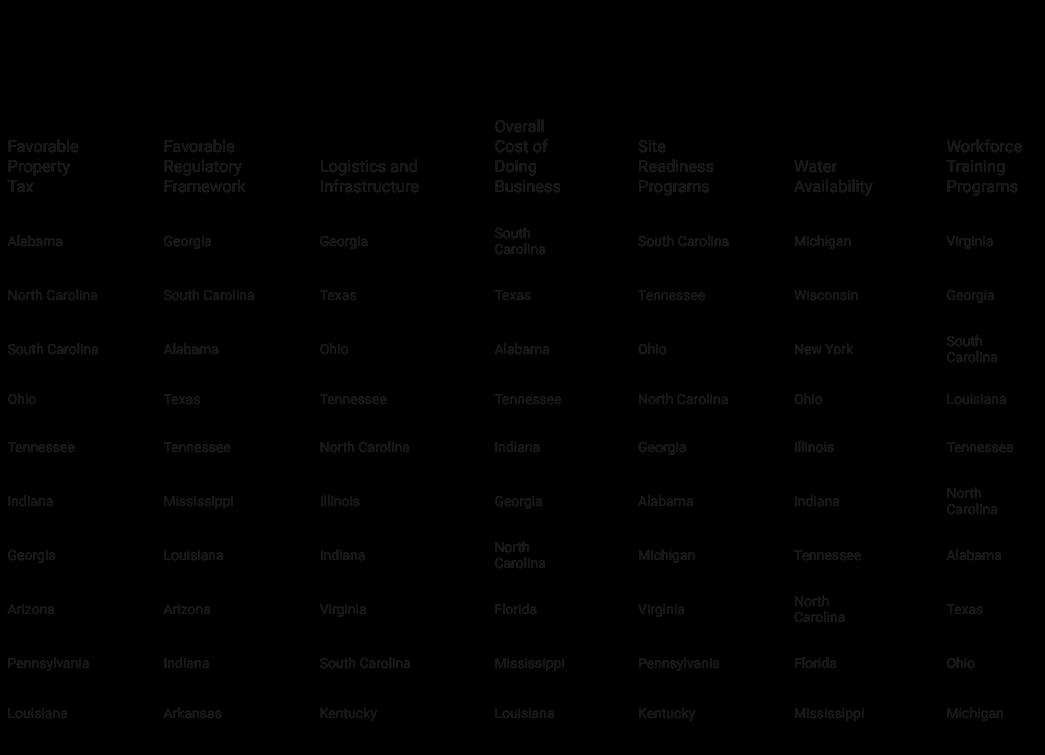
Cold storage and grocery-anchored retail are proving to be safe havens as consumer behavior shifts and CRE volatility grows
By Ermengarde Jabir, Director of Economic Research at Moody’s
The evolution of commercial real estate (CRE) has accelerated over the past five years, yet what was old is new again. Priorities are shifting back to basics. The best-performing, or at least most stable, CRE subsectors over the recent cycle have been properties tied to food-related tenants. From investor interest in cold storage to retail growth dominated by limited-service restaurants, properties connected to food, with its status
as the most essential consumer good, have shown resilience and steady demand.
Uncertain trade policy, alongside the looming threat or reality of high tariffs on imported goods, has dented consumer sentiment. This raises immediate concern around the passthrough effects to retail and industrial, particularly warehouse and distribution properties that power e-commerce distribution. To that end, consumer concerns about prices and inflation per-

sisting above the 2 percent policy target have led to changes in consumer spending habits.
The personal savings rate, while well below its pre-2020 average of 8.5 percent (and historic average of 8.4 percent), reached 4.5 percent as of June 2025, more than double the trough of June 2022, when consumers were in a phase of “revenge spending,” ranging from discretionary goods and experiences to travel. Now, inflation fatigue has set in as concerns over accelerating consumer price growth reemerge, prompting consumers to engage in the opposite behavior: revenge saving.
While the current personal savings rate is not particularly impressive in the broader context, its upward trend since the start of the year suggests that households, facing high prices and tariff uncertainty that have eroded discretionary income, are reexamining spending and hedging against further increases. In May and June 2025, the savings rate held steady at 4.5 percent, slipping from a year-to-date high of 5 percent in April as many consumers front-loaded purchases in anticipation of higher costs tied to trade policy uncertainty.
This shift in consumer behavior has made its way into data that reflects one of the most crucial warehouse and distribution demand drivers: the e-commerce
share of retail sales. At 16.2 percent, the figure is just shy of the artificial pandemic-era record of 16.3 percent set in Q2 2020, which was brought about because of necessity. The fact that the rate has plateaued for the past three quarters, the first time in the history of the series where it has remained unchanged for more than two quarters in a row, combined with the higher personal savings rate, signals a potentially longer-lasting change in consumer behavior.
So, what does this mean for commercial real estate de-
For investors navigating an uncertain CRE cycle, food remains more than just a consumer staple—it is a real estate safe haven


pendent on retail consumer spending—namely, retail and industrial subtypes such as warehouse and distribution? In volatile periods when the outlook is uncertain, the prudent approach is to focus on property types with enduring demand and room for stable growth. Increasingly, that means investment in CRE tied to essentials like food and medicine. Cold storage facilities serve as critical distribution hubs for both, while grocery-anchored neighborhood and community shopping centers represent their primary points of sale. Thus, not only is there a flight to quality in CRE, but increasingly, a flight to safety.
Cold storage is essential for food, pharmaceuticals, and even flowers, whether sourced locally or imported. Grocery-anchored retail, meanwhile, benefits from both inelastic demand for food and the enduring preference for in-person grocery shopping. This foot traffic spills over to surrounding tenants, boosting leasing activity and sales at adjacent businesses.
One of the most compelling CRE opportunities today lies in grocery-anchored retail, particularly in markets with limited competition or in densely populated areas underserved by supermarkets— so-called food deserts. Aldi, for example, has successfully targeted these areas, often revitalizing surrounding retail as increased foot traffic drives business for existing tenants and attracts new ones. This revitalization effect stems not only from food’s status as a consumer staple with relatively inelastic demand, but also from the fact that grocery shopping remains a largely inperson activity, still resistant to e-commerce.
This is evidenced by CRE capital markets data, which shows comparatively robust

Source: U.S. Bureau of Economic Analysis, U.S. Census Bureau, Moody’s Analytics
performance for retail and industrial properties when compared with other sectors. The loan delinquency rate for retail, excluding regional malls, is the second lowest across the core five property types. However, at 4.3 percent as of July 2025, it is still substantially higher than that of industrial’s 1.2 percent for the same period.
The latter has consistently had the lowest delinquency rate
of any property type since November 2019.
Payoff rates reflect a similar pattern. At year-end 2024, retail excluding malls posted an 80 percent payoff rate, which was double that of malls and about 1.5 times higher than the overall retail average. Among the core five property types, it ranked second only to industrial, which recorded a 96.3 percent payoff rate.
Despite mounting macroeconomic headwinds on both the fiscal and monetary fronts, pockets of opportunity remain. In population centers, demand for grocery-anchored retail and cold storage is expected to persist, and as populations grow, so too will the need for these properties. For investors navigating an uncertain CRE cycle, food remains more than just a consumer staple—it is a real estate safe haven.

Source: Moody’s CMBS



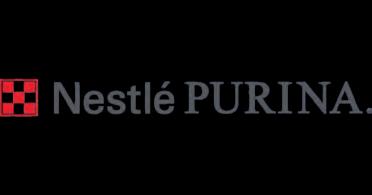




Food plants today are being redesigned not just for capacity, but for long-term agility
By Scott Kupperman, Owner, Kupperman Location Solutions

Consider just a few of the factors a food product manufacturer must be responsive to in 2025:
Ozempic, Glp-1s, and Portion Control
A growing share of the
consumer base is turning to GLP-1 drugs like Ozempic and Wegovy for weight loss. The impact has been immediate and far-reaching. Studies show these consumers cut their grocery spending by nearly a
third and reduce calorie intake by over 20 percent. In response, food companies are reengineering their product lines to feature more protein, fiber, and portion-controlled servings. Companies are also offering smaller package sizes to help optimize portion control and address budget concerns.
Nestlé has launched a line of high-protein, lowcalorie frozen meals, while Conagra’s Healthy Choice division now features a new “On Track” badge specifically designed to appeal to GLP-1 users. But behind each of these labels lies a significant operational challenge: packaging configurations must adapt, fill lines must be recalibrated, and cold storage strategies must shift to accommodate new ingredients and formats. Short-term production flexibility becomes a front-and-center concern.
There’s also the matter of what’s inside the package. The trend toward clean labels—fewer, simpler ingredients and a shift toward organic or non-GMO components—often requires companies to rethink their
That’s how much cocoa prices have risen over the past two years, forcing chocolate makers to rethink sourcing and pricing strategies 300 PERCENT
sourcing and production processes. But fewer ingredients on a label can mean more logistical complexity. To support these shifts, plants are retrofitting or rebuilding to include allergen-handling zones, streamlined sanitation protocols, and on-site quality assurance labs. Supply chain partners need to be brought into tighter alignment to guarantee traceability, and new ingredients must be stored, handled, and processed under specific conditions. Chocolate makers, for example, have faced cocoa prices that have roughly tripled over the past two years, forc -





ing price increases and a scramble to find suppliers who can offer some level of price stability. What appears as a straightforward marketing shift often ends up requiring structural changes inside the facility.
In the U.S., labeling compliance can be a moving target. While the FDA and USDA provide federal guidelines, the actual interpretation of those rules can vary dramatically by state. A product label that meets standards in Vermont might need to be redesigned for sale in California. Proposed changes like mandatory front-of-package nutrition labels are only adding to the complexity.
For manufacturers, that means building facilities that can accommodate multiple label versions and product variants—often with short lead times. Packaging lines must now support rapid changeovers, digital printing, and recipespecific formatting. Instead of planning for a single production model, companies have to design for versatility from the outset.
Consumers don’t just care what’s in their food—they care where it’s made. Local authenticity and sustainability now play a major role in brand preference. Food companies increasingly lean on their production locations to tell part of their brand story, highlighting facilities that use renewable energy, source

“What appears as a straightforward marketing shift often ends up requiring structural changes inside the facility”
for change. It’s no longer enough for a facility to be efficient or well-located. It must be adaptable—capable of responding to sudden regulatory changes, new labeling laws, and evolving consumer expectations without missing a beat.
locally, or emphasize community partnerships.
As a result, site selection decisions are being filtered through a new lens. A community with a cluster of consumer-facing brands that have historically thrived and maintained their brand value proposition will stay in contention for new investment
opportunities if those factors are thoughtfully demonstrated. Manufacturing innovation isn’t just an operational goal anymore— it’s a strategic brand asset.
For corporate real estate and supply chain leaders, the mandate is clear: build
That means designing plants and choosing locations that can contribute to—and absolutely do not limit—the need to put new ideas into production quickly. That’s the definition of innovation. The pressure on food brands to meet these demands is relentless. But increasingly, it’s the facility—and the team behind it—that determines who can keep up and who falls behind.



By Greg Burkart, Principal, Site Selection Services, Walbridge Real Estate Services
In the wake of shifting tariff policies, softening electric vehicle mandates, and reductions in EV tax credits, automotive OEMs and parts suppliers are rethinking risk strategies and identifying new opportunities for growth. These macroeconomic and policy changes are forcing leadership teams to recalibrate where and how they invest in production capacity.
Vehicle development timelines are long — often five years or more — but the current pace of political and regulatory change makes long-term planning a moving target. As of mid-July 2025, manufacturers face multiple layers of tariffs, including a 10 percent baseline reciprocal tariff on imports unless country-specific exemptions apply. Vehicles and parts imported from Canada and Mexico that comply with USMCA face tariffs of 25 percent on their non-U.S. content, with a potential increase to 30 percent on Mexican content pending in August, according to the “Trump 2.0 Tariff Tracker” published by Reed Smith. These changes are already hitting certain vehicle segments and brands. European premium automakers, for instance, have seen weighted tariff rates rise sharply — from 1.7 percent in May 2024 to 18.2 percent in May 2025. Volkswagen, which imports about 43 percent of its U.S. sales, is particularly
exposed, according to S&P Global Mobility.
Meanwhile, EV demand is tapering. A suite of early 2025 executive orders eliminated federal EV mandates and rescinded California’s longstanding emissions waiver and zero-emission vehicle roadmap. Congress subsequently reversed several EPA waiver approvals under the Congressional Review Act. BEV adoption is now expected to drop from 61 percent to 30 percent by 2035, according to Roland Berger.
At the same time, a new interest deduction for automotive loans could stimulate renewed interest in internal combustion engine (ICE) vehicles — especially those assembled in the U.S.
Across the board, OEMs are adjusting strategies to navigate the volatility.
Supply chains are being restructured. Automakers are tightening inventory management and seeking ways to limit working capital exposure to tariffs. Some are exploring nearshoring in Mexico to produce USMCA-compliant components that can enter the U.S. duty-free, according to a Q2 2025 article in Area Development by Alexandra Segers and Michael Johnson.
Production plans are shifting. As automakers face new cost pressures and demand signals, they are reassessing what to build, where, and when. General
Motors recently announced $4 billion in domestic investment to expand its ICE and EV output.
Nissan has paused QX50/55 production in Mexico and is exploring U.S. production for Infiniti, according to Automotive News and industry sources.
Powertrain flexibility is gaining traction. With federal tax credits for BEVs off the table and mandates rolled back, the rate of EV adoption is slowing. Many OEMs are expanding their lineup to include ICE, hybrids, plug-in hybrids (PHEVs), and extended-range
EVs (EREVs). Hybrids and EREVs are expected to grow significantly due to reduced charging anxiety, improved range, and smaller battery packs, according to S&P Global Mobility.
New manufacturing technologies are reducing risk. To enable greater production flexibility and reduce complexity, manufacturers are embracing innovations that support multiple powertrains on a single line. One example is Toyota’s “K-Flex” system, deployed at its Georgetown, Kentucky, plant, which can assemble Camry and


PURE OPPORTUNITY ®
As a top 10 state for R&D and innovation, Michigan provides the infrastructure, talent, and entrepreneurial support high-tech companies need to go from ideation all the way to production and distribution. It's how Orbion Space Technology joined the ranks of Fast Company's Most Innovative Companies of 2024. Seize your opportunity at MICHIGANBUSINESS.ORG
Automotive companies are adjusting the way they evaluate industrial sites as the industry evolves toward future mobility, according to Detroit Regional Partnership executives Shannon Selby and Justin Robinson. Their Verified Industrial Properties (VIP) program, which analyzes requests for information from automotive companies, has tracked over 100 site inquiries in recent years.
“We’re seeing a shift from mega-sites with extreme utility demands to mid-sized facilities—typically 20 to 200 acres—that can support flexible manufacturing and moderate workforce levels,” says Robinson. “Companies are focusing on agility, proximity to supply chains, and the ability to retool existing facilities rather than build entirely new ones.”
Other critical factors emerging include airport, port, and university access, as well as truck-ready docks and renewable energy capacity, rectangular sites, and no wetlands. Rail, once considered essential, now appears as a “nice to have” in fewer than ten percent of site requirements.
Selby points out that these trends reflect broader market realities: “The industry isn’t just looking for size or raw capacity. It’s about how quickly and efficiently sites can adapt to evolving production and technology needs.”
The VIP program helps site owners and developers align with these changing expectations, offering analysis and support for properties across the 11-county Detroit region. While this program is specific to Detroit, its insights highlight national trends shaping site selection strategies as automakers respond to advanced mobility and supply chain shifts.
RAV4 models with ICE, hybrid, or PHEV powertrains, according to Automotive News.
For companies in this shifting environment, the real estate and site strategy implications are far-reaching.
Emerging supply chains are creating new siting targets. Electric motor technologies, especially rare-earth-free variants, are reshaping the supplier ecosystem. While China holds about 45 percent of global market share, new suppliers — particularly in Europe and North America — are rapidly gaining ground. Europe is projected to produce 17 percent of rareearth-free motors by 2030, with 16 new market entrants expected over the same period, according to S&P Global Mobility.
Historical site assumptions deserve a fresh look. In 2012, Boston Consulting Group predicted that rising costs in China would spur a “tipping point” for U.S. reshoring in transportation goods. At that time, the sector’s import value stood at $6 billion. By 2024, imports had ballooned
to $44 billion. While that initial prediction didn’t fully materialize, the combined effects of rising labor costs, logistics pressures, and tariffs may now accelerate a shift back to U.S. manufacturing. BCG noted that the U.S. would attract reshored production due to its skilled labor force, R&D ecosystem, customer proximity, and more secure operating environment.
Clustering around existing plants is accelerating. With logistics costs rising and just-intime inventory systems under pressure, OEMs are increasingly drawing suppliers closer to major production hubs. More Tier 1, Tier 2, and Tier 3 vendors are locating near assembly plants to enhance supply chain resilience and reduce transit costs.
Workforce development is becoming a critical success factor. As new technologies are adopted and lines retooled, incumbent worker retraining is essential. Toyota’s Production to Skills (P2S) program in Mississippi, launched in partnership with a local commu-
nity college, is a strong example of aligning workforce development with new manufacturing demands, according to the National Institute of Standards and Technology.
Incentives that mitigate uncertainty are regaining relevance. Foreign Trade Zones (FTZs), bonded warehouses, and special economic zones can help offset tariff impacts by offering tax deferrals and duty exemptions. These tools are particularly useful in high-risk trade environments, according to previous reporting in Area Development.
With the automotive sector representing more than $1 trillion in U.S. GDP, companies that stay agile and align their site strategies with emerging risks and opportunities will be best positioned to lead. For real estate and operations executives, this is a moment to proactively review assumptions, challenge legacy models, and leverage every tool — policy, workforce, and technology — to navigate an evolving global landscape.


From heavy equipment and robotics to engines and electrical systems, the Central SC Region powers the sectors that power the world. With global leaders alongside a strong base of suppliers and skilled talent, the region is driving innovation in machinery and shaping the future of advanced manufacturing.

Sandy Run Industrial Park
GASTON, SC
AVAILABLE ACRES: 761

235 Standard Warehouse Road
LUGOFF, SC
AVAILABLE SF: 516,121

Carolina Pines Logistics Center
BLYTHEWOOD, SC
AVAILABLE SF: 252,720
Scan to view drone footage and available properties at the center of South Carolina’s thriving business landscape.
New challenges—from automation to federal fallout—are testing how companies manage risk in incentive-backed projects
By Brooklin Salemi, Senior Managing Director & Joe Gioino, Senior Managing Director, Economic Incentives Advisory
Incentives are still a powerful tool for advancing corporate location decisions, but they’re no longer the backstop they once were. Projects are missing targets. Programs are changing. Compliance is becoming more complex. At Newmark, we’ve watched these shifts unfold firsthand while supporting clients across North America and around the globe. What we’re seeing now is a realignment of how incentives are structured, measured and delivered—and it’s catching some companies off guard.
Projects are underdelivering. In nearly every sector, we’re seeing companies fall short of their original job and capital investment commitments. Sometimes it’s automation. Sometimes it’s talent shortages, delays, FDA approvals or internal misalignment. In every case, it creates a ripple effect. Project milestones get delayed. Incentive agreements must be renegotiated. In some cases, incentives are reduced or lost entirely.
Take one recent client. The project was supposed to generate 400 jobs at an average wage of $70,000 and $100 million in investment. It delivered only 300 jobs—but those roles paid $125,000 annually. From a payroll tax perspective, the state was actually doing better. But on paper, the agreement had been breached. We stepped in to help make the case: The capital was spent, the economic value was delivered, the job count was just lower than anticipated. It required careful negotiation and trust between company and community.
Some states are adjusting their formulas to reflect this new reality. We’ve seen weighted approaches that factor in both capex and jobs, sometimes allowing one to offset the other. But not all programs are built this way. Many remain rigid, designed for older models of job creation. If your agreement requires 100% compliance with no room for renegotiation, that’s a setup for conflict. Companies should push for built-in flexibility from the outset, especially when automation or variable timelines are involved.
Renegotiation is never ideal. It means returning to local boards, triggering new public hearings and risking community backlash. Agreements that lock in overpromised numbers make everyone’s job harder—including ours. Companies are better off setting conservative floors rather than aspirational ceilings. And when possible, communities should structure agreements that allow for grace bands—meeting 80 percent of goals without triggering a default, for example.
Federal funding complicates things further. Over the past two years, the race for IRA and CHIPS Act money has forced companies to start site selection and incentives conversations much earlier. But many of those projects have now been rejected for funding—and it’s throwing entire timelines and investment strategies into disarray. Projects are being downsized. Some are being canceled outright. Others are pivoting to foreign investors, which can introduce new political risks, especially in communities wary of Chinese FDI.
Incentive timelines rarely match corporate timelines. A rejected federal grant can send a project back to square one just as local approvals are wrapping up. Companies need contingency plans. States and communities need to recognize that a failed federal bid doesn’t mean the project lacks merit—but it might need to be restructured. Megaproject fatigue is real. The past few years have been defined by a surge of supersized investments, especially in EV and battery manufacturing. But these projects are politically fraught, expensive to support and difficult to administer. The compliance burden alone can require companies to hire full-time staff just to manage reporting. Communities are beginning to reconsider their appetite for risk. Some are even relieved when we bring them smaller, more right-sized projects—125 jobs, $70 million—that might have been ignored in the past. Data centers face a similar reckoning. Incentives are being reevaluated in nearly every state. Some legislatures want to eliminate them. Others are creating hybrid models where companies must choose between state and local benefits. The public is asking harder questions and, in many cases, demanding more reporting. We’re watching communities take a closer look at ROI and push back on giving away the farm. Other sectors are seeing new opportunity. Life sciences is returning, with more manufacturing and R&D projects in play. Food and beverage is staying steady. Semiconductors, AI and electronics remain red-hot. But office deals are getting left behind. Post-pandemic, the economics of office space have changed. Renovations are expensive. Class C space is practically uninhabitable. Many states’ incentive programs aren’t designed to support these smaller, less capital-intensive projects. Office-to-residential conversions, where they’re happening, require different metrics entirely. You can’t tie housing outcomes to job creation.
Inventory tax incentives are back in the spotlight. With tariff uncertainty and supply chain reconfiguration, companies are asking more questions about Freeport exemptions, foreign trade zones and other logistics-related incentives. If you’re in a state that doesn’t offer these, now might be the time to rethink that. These tools are part of how companies are insulating themselves against global instability.
Everything is being scrutinized more closely—from community backlash on foreign ownership to public skepticism about megadeals to the actual enforceability of clawbacks. But the solution isn’t to avoid incentives. It’s to approach them more strategically. Companies must build realistic forecasts, ask hard questions about compliance terms and understand the political and economic landscape of their chosen location.
The incentive landscape in 2025 is not broken. But it is evolving. Flexibility, transparency and strategy are more important than ever. Get those right, and incentives still work. Miss the mark, and the cost isn’t just lost dollars—it’s broken trust

The Make America Beautiful Again initiative emphasizes incentives, partnerships, and business-friendly opportunities across sectors
By Warren Koshofer, Partner, Michelman & Robinson LLP
When the Make America Beautiful Again (MABA) initiative was enacted in July 2025, it marked a fundamental shift in U.S. conservation policy, one designed to marry environmental stewardship with economic vitality. For businesses operating in energy, agriculture, outdoor recreation, tourism, and infrastructure development, understanding MABA’s objectives, implications, and opportunities is critical.
Unlike earlier frameworks that relied heavily on regulation, MABA emphasizes voluntary stewardship and public-private partnerships. This approach is designed to create opportunities for collaboration—as opposed to regulatory hurdles and confrontation—and aims to restore habitats, expand public access to lands, modernize infrastructure, and, most notably given recent floods, wildfires, and tornadoes, reduce risks tied to natural disasters.
At the heart of MABA is a philosophy that prioritizes incentivebased cooperation over punitive regulation. The initiative establishes the MABA Commission, a coalition of federal agencies, states, tribal governments, nonprofits, and private landowners tasked with advancing landscape-scale conservation across jurisdictional boundaries. For businesses, this results in fewer regulatory compliance burdens and new tools and opportunities to support conservation and sustainability objectives without sacrificing—and indeed potentially increasing— profitability. Ranchers and farmers, for example, will have access to financial incentives for creating wildlife corridors or planting pollinator habitats—measures that enhance biodiversity and protect water quality while keeping operations viable.
MABA also focuses on expanding public access to trails, waterways, and federal lands for outdoor activities such as hiking, fishing, hunting, and camping. These pursuits are more than cultural touchstones; they represent a significant economic engine. Outdoor recreation contributes an estimated $1.2 trillion annually to the U.S. economy, and the initiative seeks to amplify this impact by enhancing opportunities for businesses, particularly in rural communities.
For small businesses—guides, outfitters, hospitality operators— expanded access could mean increased tourism, higher revenues, and greater resilience in areas that often lack economic diversification. Beyond the sought-after financial benefits, improved access to lands helps engage the public in conservation efforts, reinforcing the concept of shared responsibility for natural resources.

One of the most tangible elements of MABA is its commitment to reducing the $23 billion maintenance backlog across national parks and forests. Through a combination of visitor fees and public-private partnerships, the initiative will finance upgrades to trails, roads, and visitor centers, with an emphasis on climate-resilient infrastructure that reduces long-term repair costs.
For industry, this represents a major opportunity pipeline for construction, engineering, and related services. The idea behind MABA





Small modular reactors could help meet surging demand for energy
By Larry Gigerich, Executive Managing Director at Ginovus
Power drives site location. With the surge in hyperscalers across nearly every industry, energy demands have continued to increase, and alternative solutions have become increasingly attractive. There is heightened demand for cleaner energy options, and the nuclear energy industry is seeing renewed attention. There are a number of intriguing projects underway in the nuclear power sector — from restarting large, mothballed nuclear facilities to building smaller packaged nuclear facilities across the U.S. — options once considered infeasible are being explored anew.
Nuclear energy is reliable and highly capable. Nuclear energy currently generates 775 billion kWh annually and accounts for nearly 20 percent of all U.S. generation since the 1990s. Most U.S. nuclear power plants use light-water reactors, a type of nuclear reactor that uses water as the coolant and the neutron moderator, to produce around one gigawatt (1 GW) of power each.
The technology behind small modular reactors (SMRs) is similar to large, traditional reactors and has historically been used to power nuclear submarines. Innovation has taken that technology to the next level. Due to their smaller size, SMR modules can utilize readily available components and be scaled to meet specific energy demands. Additionally, added safety features allow for a smaller land footprint and require less on-site setup and maintenance.
Despite advances in technology and safety, reactor manufacturers have historically been unable to establish operations for clusters of modular nuclear reactors to supplement the energy grid. The acceleration in demand in order to power AI, data centers and other projects is seemingly insurmountable. A prime example is Texas. The state is projecting a need to nearly double its electrical capacity by 2031. This unprecedented stress on the power grid has opened the door for innovative public-private collaboration.
Texas A&M recently announced a partnership with four small modular reactor companies — Kairos Power, Natura Resources, Terrestrial Energy, and Aalo Atomics — to build and test different styles of reactors at the RELLIS Innovation & Tech Campus. This “Energy Proving Ground” aims to generate “reliable, dispatchable power for the state” — with a goal to be operational by 2030 and potential capacity of 1 GW to start.
SMRs are a promising consideration in the alternative energy conversation, offering compact solutions for specific use cases. The development of small modular reactors (SMRs) could close the infrastructure gap and accelerate energy access to rural areas. The reactors require as little as 10 acres and can be co-located with manufacturing operations to provide a more sustainable energy package for projects. The versatility of SMR size and scale would allow utility companies to better adjust their electricity output of nuclear power to match demand. A single SMR could be a fit for projects with total power demands less than 300 MW, depending on the location. In comparison, a traditional nuclear power plant produces 800 MW of electricity or more.
W hile promising, SMRs face significant challenges for large-scale applications. First, there have not yet been any SMRs manufactured in the U.S. to date. The Nuclear Regulatory Commission has approved the first SMR design for production, and Holtec and other industry leaders have set goals to manufacture and implement SMR technol-

ogy by 2030. Second, the current timeline to deploy an SMR is three to four years, which is comparable to an electrical substation. A large, advanced manufacturing plant or data center can demand in excess of 500 MW at full operation, and hyperscalers demand multiple gigawatts. SMRs are cost-prohibitive in comparison to traditional substations for these high-energy-demand projects. Third, the SMR is one tool to close the energy gap, not the silver bullet. While SMRs are scalable and customizable, other solutions are necessary to meet the increasing and complex energy demands of the new economy. Recent federal tax legislation—the One Big Beautiful Bill Act, signed July 4, 2025—phases out most clean-energy credits like wind and solar, but importantly preserves technology-neutral production and investment credits, including those for new nuclear facilities and SMRs through at least 2033.
The implementation of 300 SMRs could nearly double the U.S.’s nuclear power output. Beyond energy outputs, the construction and operation of nuclear reactor plants could generate hundreds of thousands of skilled jobs in the coming decades. The Nuclear Energy Institute estimates that up to 75 percent of the workforce for the fossil fuels industry could transfer to the nuclear power industry. A recent study by the Department of Energy found that more than 80 percent of retired and retiring coal sites in the U.S. are suitable for new advanced reactor technologies. These new technologies could potentially give a community a 92 percent increase in tax revenue and 650 more jobs over their former coal plant operations.
Environmental considerations also present an uncertain outcome. Nuclear energy generates fewer carbon emissions than traditional energy sources; however, spent nuclear fuel requires isolation in deep-mined repositories for hundreds of thousands of years. Despite these potential limitations, this evolving industry is gaining momentum across all
sectors and will undoubtedly impact long-term energy solutions as the technology advances and costs decrease.
Electricity demands will continue to be a primary driver of future projects. Advancements in the AI and data center industries will continue to wear on the scarcity factor of the already-stressed electrical grid. It is essential to understand and anticipate the opportunity cost of available land and electric capacity and reliability to identify the top potential sites for a project.
Land near power stations, provided that capacity is reliable and scalable, is more valuable. Additionally, an opportunity to co-locate power generation on data center and manufacturing sites is a huge advantage for site selection projects.
State and community economic development organizations need to take a holistic approach to project pursuit, balancing the demand for high-power sites with highest-and-best-use considerations. As a prime example, communities may be drawn to proposing a rail-served site for a lucrative data center project because the infrastructure is readily available. However, strategic and long-term thinking may need to counteract that impulse, recognizing that the site is better suited for manufacturing operations that may benefit from growth opportunities provided by the cost-effective and efficient transportation options for raw materials and finished goods — options not needed by a data center operation.
As energy demands rapidly increase across sectors, particularly in data centers and advanced manufacturing, SMRs present a promising component in America’s evolving energy portfolio. While facing challenges including regulatory hurdles, deployment timelines, and waste management concerns, these compact nuclear solutions offer a path toward reliable, low-carbon energy generation that complements traditional power infrastructure. The strategic implications for site selection professionals and economic developers are significant, with communities that proactively address these considerations potentially gaining a competitive advantage in attracting next-generation projects.

L ooking toward 2030 and beyond, the energy landscape will likely feature a diversified approach that includes SMRs alongside traditional power sources and renewables. For businesses and communities alike, adapting to this new reality requires forwardthinking strategies that balance immediate energy needs with long-term sustainability goals, understanding that the nuclear option is not a complete solution but rather an important piece of the complex puzzle of powering our technological future.

Once dominated by legacy clusters, aerospace site selection is evolving rapidly as companies prioritize speed, workforce specialization, and strategic proximity
By Garrinson Partridge Area Development Staff

The U.S. aerospace industry is once again in growth mode— but the drivers of that growth have changed, and so have the places best positioned to benefit. Spurred by defense modernization, space commercialization, and next-generation aviation technologies, a new era of aerospace site selection is taking shape. At the center of this transformation are states and regions that offer not just incentives, but speed to market, secure infrastructure, and deep talent pools tuned to the needs of advanced aerospace.
As the industry shifts from legacy hubs to emerging contenders, we take a closer look at the regional playbooks helping shape this new aerospace map—and what corporate real estate executives, supply chain leaders, and site selectors need to know now.
North Carolina has emerged as a leading destination for aerospace investment, thanks to a combination of workforce customization, shovel-ready industrial sites, and a strong track record with both legacy and startup companies. GE Aerospace and Pratt & Whitney have both expanded in the state. Pratt & Whitney’s $285 million expansion in Asheville adds a new casting foundry and more than 300 new jobs to its Industry 4.0 turbine airfoil plant. This growth was made possible in part by tailored training partnerships with Asheville-Buncombe Technical Community College.
Meanwhile, startup JetZero chose Greensboro’s Piedmont Triad International Airport for its $4.7 billion Z4 aircraft program. The site beat out multiple national contenders. “More important than discretionary incentives, it’s knowing they
have the workforce,” said John Loyack, VP of Economic Development at the North Carolina Community College System. Loyack added that the NCEdge initiative is helping aerospace employers rapidly onboard trained workers through customized credentialing programs developed in partnership with employers.
Chris Chung, CEO of the Economic Development Partnership of North Carolina, emphasized the state’s coordinated effort: “It’s not by accident that North Carolina has become a magnet for aerospace and aviation investment. This is the result of sustained collaboration between education, government, and industry.”
What sets North Carolina further apart is its infrastructure planning. In the Triad region alone, more than 1,000 acres of aviation-adjacent industrial land are being actively developed, with utilities and road access funded through publicprivate partnerships. This planning translates into a measurable advantage: aerospace manufacturers can shave six to 12 months off construction timelines by locating at pre-certified sites.
Site selectors are also watching NC’s growing capacity for composites and advanced materials. The Composite Center of Excellence at NC State and partnerships with private OEMs have helped attract additional suppliers to the state.
Ohio is capitalizing on its industrial legacy by pivoting into high-tech defense aerospace. The headline project is Anduril’s Arsenal-1 facility near Columbus—a hyperscale, vertically integrated site focused on autonomous systems and hypersonic production. Over 4,000
jobs have been announced so far. “The site itself could not be better,” said Christian Brose, Chief Strategy Officer at Anduril, in a company statement announcing the Arsenal-1 project. “It’s close to a talented labor market of upwards of a million people… many already working in automotive and aerospace.”
Ohio’s aerospace footprint is also growing through GE Aerospace’s investments in hypersonic propulsion R&D at its Evendale campus. These efforts reinforce the state’s unique combination of research capacity, retooled manufacturing skill, and logistics strength. Matt McCollister of One Columbus noted that the region has worked aggressively to build site-ready inventory and align workforce resources with companies like Anduril, which require fast, flexible solutions.
“The aerospace and defense cluster in Ohio is experiencing unprecedented growth,” said J.P. Nauseef, President and CEO of JobsOhio. “From our innovation districts to advanced logistics corridors, we are building a durable ecosystem that meets the speed and sophistication today’s aerospace firms demand.”
Of particular interest to site selectors is how Ohio is adapting its Tier 1 and Tier 2 automotive suppliers to serve aerospace primes. In Marysville and Dayton, companies like Honda Logistics and Inteva Products have announced crossover component contracts, highlighting the potential for shared supply chains. Dayton has rapidly emerged as a center for advanced aerospace production, according to Colliers’ Q1 2025 Aerospace & Defense Report for Dayton, which notes the city’s strong momentum in defense supply chain real estate and demand for specialized industrial campuses near the Dayton aerospace cluster.
State and local incentive packages have further contributed to the region’s momentum, enabling faster site decisions through streamlined permitting processes and infrastructure guarantees. In recent deals, Ohio has committed to expedited approvals for clean room construction and long-term power delivery—key requirements for propulsion system testing and production.
At the historic Stennis Space Center in Hancock County, Mississippi, a quiet transformation is taking place. NASA’s longtime test stands are now being leased by private companies like Relativity Space and Rocket Lab. This marks a shift from publicly controlled to commercially activated infrastructure. “For the first time in history, we’re seeing a real commercial infusion into Stennis,” said Blaine LaFontaine, Executive Director of the Hancock County Port and Harbor Commission. “Companies are bringing in taxable assets and new jobs, and revitalizing infrastructure that had gone underutilized for decades.”
Relativity’s 3D-printing production and rocket testing at Stennis is just the beginning. “With a skilled workforce and world-class infrastructure, Hancock County is the perfect place for us to perform the wide variety of tests that are critical to develop our fully 3D printed Terran 1 orbital rocket and Aeon engines,” said Tim Ellis, CEO and co-founder of Relativity, in the company’s public announcement of its expansion at Stennis. The region is also attracting defense-related manufacturing. Ace Thermal Systems has added
jobs in Seminole County, contributing to a growing network of suppliers. Leshia Pearson, Director of Aerospace & Defense at the Mississippi Development Authority, noted, “We’ve been intentional about preparing infrastructure and workforce to accommodate growth in both commercial space and defense manufacturing.”
For companies seeking large-format testing environments, Hancock County offers a compelling logistics advantage. The nearby Port Bienville and CSX rail service allow for oversized freight and hazardous material transport, often a requirement for launch providers and engine developers. Additionally, companies benefit from federal Opportunity Zone designations and energy rate discounts that improve long-term operational economics.
Georgia’s aerospace sector has long been a quiet giant, but recent investment waves are amplifying
its role in both commercial and defense aviation. Aerospace is the state’s number one export—totaling $11.1 billion in 2023—and it ranks as Georgia’s second-largest manufacturing industry overall. This momentum is being led by a mix of legacy OEMs like Gulfstream and Delta TechOps, as well as new entrants investing in R&D, MRO, and electric aviation.
Savannah remains a linchpin for the sector. Gulfstream Aerospace has invested more than $150 million in facilities there, supporting the production and servicing of its G400, G500, and G600 aircraft. The company recently expanded its Customer Support service center and manufacturing footprint, bringing over 1,600 new jobs to the region.
“Savannah has been our home for decades, and the support we receive from state and local partners makes this growth possible,” said Gulfstream President Mark Burns in a company release. The expansion reinforces Savannah’s specialized workforce and infrastructure tailored to business aviation.
Savannah has become one of the fastest-growing aerospace and defense employment markets in the U.S., with job postings surging over 300 percent since 2020, according to a JLL report.
Elsewhere in the state, emerging technologies are driving new growth. Archer Aviation recently completed its 400,000-square-foot aircraft manufacturing facility in Covington, built adjacent to the Covington Municipal Airport. The plant is set to produce the company’s Midnight eVTOL aircraft and represents a major bet on Georgia’s logistics capacity and proximity to metro Atlanta’s engineering talent.
Georgia’s strength lies not just in marquee names but also in its second-tier markets. In Roswell, PBS Aerospace is investing $20 million in its new North American headquarters and manufacturing facility. Meanwhile, StandardAero is undergoing a $33 million MRO expansion in Augusta. These projects reflect the state’s ability to support small-to-mid-tier firms alongside global players.



Pat Wilson, Commissioner of the Georgia Department of Economic Development, noted the state’s edge: “Companies choose Georgia because we offer end-to-end support—from the initial site search to training the first employee. Our technical colleges, our logistics network, and our long-standing aerospace clusters all help reduce risk and speed up time to value.”
For site selectors and corporate real estate leaders, Georgia’s readiness is palpable. Aerospace sites near key airports—from Augusta to Columbus—offer large pad-ready tracts and established utility capacity. The state has also improved permitting timelines through partnerships with local authorities and invested in airspace and drone corridors to support future aerospace traffic.
“We’re doing the gardening so companies can harvest,” said Bob Koseck, Division Director of Global Commerce at the Georgia Department of Economic Development. “That means infrastructure, talent pipelines, permitting—all the things that make it easier to hit milestones.”
Virginia has cemented its place as a strategic aerospace hub by leaning into its defense footprint, world-class research institutions, and access to critical coastal infrastructure. While the state may not dominate in raw manufacturing volume, it punches above its weight in systems integration, testing, and launch services tied to national security and commercial innovation.
Wallops Island, home to NASA’s Wallops Flight Facility and the Mid-Atlantic Regional Spaceport (MARS), is quickly becoming a keystone for space access on the East
Coast. Northrop Grumman has launched multiple Antares rockets from the facility, and Rocket Lab has committed to expanding launch operations at the site. In early 2024, Virginia-based Gravitics announced it would explore testing at Wallops for its commercial space station modules.
“The convergence of federal assets and state-backed innovation funding makes Virginia an incredibly attractive place to grow space-related operations,” said Dale Nash, former CEO and executive director of Virginia Space. State officials and economic developers have focused not only on launch capabilities but also on building out the surrounding aerospace supply chain along the Delmarva Peninsula.
Further inland, Northern Virginia continues to attract defense aerospace investment tied to secure communications, AI-integrated systems, and space-based defense technologies. The presence of major primes—BAE Systems, Leidos, Raytheon—and proximity to the Pentagon give the region a competitive advantage when it comes to workforce specialization in national security-related aerospace. A steady pipeline of graduates from Virginia Tech, George Mason, and the University of Virginia further bolsters technical hiring.
Real estate decision-makers are also watching the Danville region, where Virginia has piloted one of the country’s most advanced talent development models for precision machining and aerospace manufacturing. The Gene Haas Center for Integrated Machining, in partnership with Danville Community College and the Institute for Advanced Learning and Research, is turning out workers with four-axis CNC, metrology, and digital twin experience.
These capabilities are in high demand as OEMs push further into additive manufacturing and complex part fabrication.
In Hampton Roads, Huntington Ingalls Industries continues to invest in unmanned systems and has launched new training programs in collaboration with Old Dominion University. These efforts reflect a state-level commitment to connecting traditional defense manufacturing with next-generation autonomous and aerospace capabilities.
JLL reports that federal lease demand in the National Capital Region has risen 12 percent since 2020, driven largely by expanded DoD contract volumes—totaling $489 billion in 2023—which continue to shape real estate needs for defense primes and R&D contractors in Virginia
For corporate site selectors evaluating the East Coast, Virginia offers a rare combination of federal integration, innovation funding, and coastadjacent launch and test infrastructure. The state’s regulatory environment is also becoming more streamlined, with recent permitting reforms designed to accelerate projects tied to federal contracts.
Texas has long loomed large in aerospace, with major federal installations like NASA’s Johnson Space Center, a thriving defense footprint, and a deep bench of engineering talent. But what’s pushing Texas to the forefront in this new aerospace cycle is its willingness to back commercial pioneers—especially those with bold, even controversial visions for the future of flight and space
The state’s most visible project remains SpaceX’s Starbase in Boca Chica, where Elon Musk’s company has built and launched prototypes of its Starship vehicle, aimed at enabling interplanetary transport. While environmental permitting and community relations in the region remain tense, the sheer scale of investment is impossible to ignore. “This place is going to be the gateway to Mars,” Musk declared in a widely reported company update in 2024. Whether or not that proves true, the site has already attracted downstream suppliers and sparked logistical planning for a possible commercial spaceport corridor along the Gulf Coast.
Brownsville, the nearest city to Starbase, has embraced its new identity as a launch hub. The Greater Brownsville Incentives Corporation has invested in site development, technical training programs, and power infrastructure to meet aerospace tenants’ demands. While some permitting challenges persist at the state and federal levels, the region’s strategic location, large labor pool, and low cost of living remain attractive for companies working in propulsion, launch systems, and advanced materials. Elsewhere in Texas, legacy players are also scaling up. Lockheed Martin continues to invest in its Fort Worth operations, including a new 500,000-squarefoot facility supporting F-35 production and sustainment. The company cited strong workforce pipelines from local technical colleges and universities. Meanwhile, the Houston Spaceport—a project housed within Ellington Field—is emerging as a testbed for private space companies and research institutions. Axiom Space and Intuitive Machines have both opened major facilities there in the last 18 months, with support



Williams International, a global leader in aviation gas turbine engines, has selected Okaloosa County in Northwest Florida to invest over $1 billion in a new high-volume manufacturing facility. The 1-million-square-foot campus will be developed in three phases at the Shoal River Industrial Park, with the initial 250,000-squarefoot phase starting construction soon.
This is Northwest Florida – where coastline meets bottom line – and we have a spot waiting for you, too. Contact us today at www.FloridasGreatNorthwest.com.



from the Houston Airport System and Space Center Houston.
The real estate implications are significant. Much of the aerospace growth in Texas is occurring in secondary and tertiary markets that offer large parcels of land and close access to transportation corridors, including major ports and dedicated airfields. State incentives can be generous, particularly under the Texas Enterprise Fund and Chapter 313-style local abatements, though these are undergoing legislative review.
Yet the rapid growth comes with headwinds. Permitting timelines, especially for projects near ecologically sensitive areas like the Gulf Coast, can be uncertain. Water access, power availability, and community resistance to large-scale testing activities have all surfaced as barriers in various parts of the state. Still, companies willing to navigate the complexity may find Texas unmatched in its enthusiasm for aerospace ambition.
“The resources and infrastructure we have here are truly world-class,” said Brent Kisling, Executive Director of the Texas Aerospace & Aviation Advisory Committee, in a recent industry roundtable. “But more importantly, we have a mindset in Texas that says: if you’re trying to do something no one’s done before, this is where you start.”
Colorado has emerged as one of the country’s most concentrated aerospace clusters, blending space tech entrepreneurship with a deep bench of defense contractors and federal assets. The state now ranks first in the nation for private aerospace employment per capita, and its diverse ecosystem spans everything from satellite manufacturing and cy-

bersecurity to AI-enabled space domain awareness.
At the heart of the action is the Denver metro, where companies like Lockheed Martin, Ball Aerospace, Sierra Space, and Maxar Technologies anchor a constellation of startups, labs, and integrators. The state is also home to Buckley Space Force Base, Schriever Space Force Base, and the U.S. Space Command—making it both a strategic operations center and a magnet for talent.
In 2024, Sierra Space took a major step forward with its Dream Chaser spaceplane program at its new “Spaceport Colorado” facility near Centennial Airport. Designed to ferry
cargo (and eventually people) to low Earth orbit, the Dream Chaser initiative is emblematic of Colorado’s commercial space push. “Colorado gives us the talent, altitude, and regulatory environment we need to lead in space transportation,” said Sierra Space CEO Tom Vice during a public announcement.
The state’s appeal goes beyond its prestige players. Colorado’s startup culture has fostered next-gen companies in propulsion, robotics, and additive manufacturing—many of which have grown through contracts with the Department of Defense or NASA’s SBIR programs. Aerospace alleyways in Boulder, Littleton, and Colorado Springs
now host dense networks of suppliers and specialists.
Real estate investors have responded by developing new flex and advanced manufacturing space near airports and research corridors. Several industrial parks in Jefferson and El Paso counties are now fully leased to aerospace tenants, with additional sites under development. Local economic developers have prioritized zoning reforms and infrastructure enhancements to speed up buildout for advanced users.
For workforce planners, Colorado’s university system is another draw. The University of Colorado Boulder and the Colorado School of Mines
produce hundreds of graduates annually in aerospace engineering and space resources—many of whom go on to work in local firms. The state’s work-based learning model, led by the Colorado Workforce Development Council, also gives companies a mechanism to develop custom apprenticeship programs tied to mission-critical needs.
With its combination of altitude, assets, and ambition, Colorado is becoming the goto location for aerospace firms needing close access to national defense infrastructure and a collaborative innovation culture. While real estate prices are rising in key metro areas, companies continue to prioritize proximity to Colorado’s unique institutional and federal resources.
As aerospace primes and Tier 1 suppliers expand across the U.S., a set of emerging regions is making a compelling case for inclusion in future supply chains. These areas may not have the long-standing legacy of Ohio or North Carolina, but they are attracting attention for their specialization, infrastructure investment, and workforce potential.
As the U.S. aerospace industry reorients itself for a new era of defense priorities, commercial
launch, and high-speed innovation, a corresponding shift is underway in how—and where—companies decide to build. The old rules no longer apply. Instead of clustering around legacy aerospace cities, today’s most ambitious companies are looking for states and regions that offer the trifecta of ready sites, rapid workforce deployment, and long-term strategic value.
From Mississippi’s reinvention of its NASA infrastructure to Ohio’s transformation into a hypersonic corridor, the industry’s most exciting developments are often happening in places that have deliberately aligned infrastructure, education, and permitting processes to aerospace’s fast pace.
• 15% MORE PRODUCTIVE MANUFACTURING WORKFORCE THAN NATIONAL AVERAGE
• 4X MORE AEROSPACE MANUFACTURING EMPLOYEES THAN SIMILAR-SIZED MARKETS
• #1 MOST EFFICIENT U.S. INLAND PORT DISTRICT
• 6 CLASS 1 RAILROADS: GLOBAL CONNECTIVITY
• 3.5X MORE ANIMAL FOOD MANUFACTURING EMPLOYEES THAN PEER METRO AREAS
• $8B+ IN INFRASTRUCTURE IMPROVEMENTS
• LOW COST OF LIVING (13.7% BELOW NATIONAL AVERAGE) WITH DIVERSE ECONOMIC OPPORTUNITIES.
North Carolina’s statewide workforce platform, Georgia’s logistical dominance, and Colorado’s deep talent pipeline all point to a future where state competitiveness is defined less by who offers the biggest check—and more by who can deliver results, fast.
For site selectors, that means the competitive map of the U.S. is actively being redrawn. Aerospace firms that once followed predictable legacy patterns are now considering mid-sized cities, university towns, and multi-modal freight hubs. Meanwhile, real estate portfolio managers are navigating new demands for scale, security, and environmental performance as they build out next-gen production and testing facilities.

in advancing major infrastructure projects and addressing global supply chain disruptions, visit TheFreightway.com/AREA or follow us on social media. For site selection assistance, contact Mary Lamie at 314-982-1562 or MCLamie@TheFreightway.com THE ST. LOUIS REGION DELIVERS. LET US GET YOU MOVING.
As trade tensions mount, Canada’s supply chain reboot aims to retain foreign investment and reduce risk exposure
By Marc Beauchamp, President at SCI Global
Canada’s foreign direct investment (FDI) performance remains strong by global standards. According to the latest data from Statistics Canada, the stock of FDI rose by $77.8 billion in 2024, reaching a record $1.5 trillion.
Investment was particularly robust in manufacturing and natural resources, reflecting sustained international interest in these sectors. Notably, Canada now holds the second-highest FDI-to-GDP ratio among G20 nations, a testament to its strong economic fundamentals, open markets, and reputation for political and regulatory stability.
As geopolitical tensions rise and global industrial policy shifts, Canada’s supply chain reorganization in 2025 is becoming more than a response — it is a strategic pivot to enhance domestic resilience and position Canada as a more attractive destination for FDI.
The Canadian Manufacturers & Exporters (CME) has emphasized the urgent need to redesign supply chains for resilience, not just efficiency. Global disruptions, escalating protectionism such as U.S. tariffs, and raw material volatility have exposed critical vulnerabilities in Canada’s manufacturing base.
In its Spring 2025 Manufacturing Outlook Report, CME highlighted that 68 percent of Canadian manufacturers experienced supply chain disruptions in the past year. Only 20 percent reported full visibility into their Tier 2 and Tier 3 suppliers. Seventy-two percent support government incentives to near-shore or re-shore supply chains
Although calls continue for a formal Supply Chain Resilience Office and a National Industrial Supply Chain Strategy similar to the U.S. Office of Supply Chain Preparedness, governments at both levels are already responding.
The National Trade Corridors Fund (NTCF) is investing in infrastructure and digital tools to enhance logistical efficiency and reduce bottlenecks. The Strategic Innovation Fund is targeting domestic manufacturing, including Canada’s steel sector, to pivot into new, resilient product lines. The Critical Minerals Strategy supports domestic extraction, processing, and circular supply chains for rare earths and battery materials.
Until now, Canada often functioned as a North American gateway, especially for automotive, agri-food, and advanced manufacturing. But tariff risks are shifting this model. Canadian firms are now redesigning supply chains into two distinct streams: Canada-focused chains, aimed at domestic use and diversified export markets; and U.S.-focused chains, with some production moved or co-located in the U.S. to maintain tariff-free access and qualify for Buy American procurement.

The reorganization is spurring renewed interest in vertical integration and domestic sourcing. We’re seeing early moves to localize critical inputs in sectors like auto and aerospace parts, clean tech and battery components, agri-food processing, and rare earths and mining services.
Firms are reshoring previously offshored processes and forming new partnerships with Canadian suppliers to blunt tariff exposure and ensure security of supply.
As firms reconfigure operations, demand is rising for industrial land and logistics hubs outside traditional export corridors; cold storage, clean energy capacity, and rail interconnectivity for domestic distribution; and interprovincial trade infrastructure to support diversified market access.
To support this shift, provincial governments are accelerating permitting processes, including in British Columbia, Ontario, Saskatchewan, and Alberta.
Another adaptation underway is cross-border co-manufacturing. Canadian firms may increase joint ventures or assembly-sharing agreements with U.S. partners where components are built in Canada and final assembly, or compliance happens under U.S. jurisdiction. This strategy preserves U.S. market access and eligibility for government procurement programs.
As Canadian site selectors working closely with international investors, we see both the drivers of interest in Canada and the reasons for hesitation. On the surface, Canada continues to check the right boxes:
a highly skilled workforce, a diverse industrial base, world-class infrastructure, and preferential access to more than 50 countries through free trade agreements. These strengths still resonate with corporate decision-makers.
Yet beneath this positive outlook, caution is growing. In recent months, global investors have become more reluctant to commit to large-scale projects in Canada, largely due to escalating trade frictions, particularly the latest wave of U.S. tariffs and the uncertainty of what may follow.
W hile these trends point to long-term strength, some FDI has paused in the short term. International investors are watching tariff developments closely, hedging decisions between Canadian expansion and U.S. onshoring.
From an investor’s perspective, Canada is no longer evaluated in isolation. Increasingly, companies compare its value proposition not only to the United States, but also to emerging alternatives in Europe and Asia.
Canada continues to offer a compelling mix of talent, incentives, and market access. However, the growing influence of U.S. protectionism casts a long shadow over investment decisions. This uncertainty affects everything from capital budgeting to site selection for North American manufacturing.
For many investors, the question has shifted from “Is Canada a good place to do business?” to “Can Canada remain competitive if trade friction becomes the new normal?”
Canada’s 2025 supply chain reorganization is more than defensive — it’s laying the foundation for a next-generation industrial strategy. While short-term uncertainty may temper FDI inflows, the long game is clear: a more resilient, vertically integrated, digitally mature manufacturing ecosystem with reduced overdependence on U.S. trade flows.
If executed well, this transition could make Canada a global benchmark for industrial security and sustainability and an even more attractive place to build the supply chains of the future.
Global investors are paying close attention. While Canada is still viewed as a stable and reliable jurisdiction, it now faces growing external pressures. Investor confidence is no longer a given — it must be earned, project by project.
As site selectors helping companies evaluate locations and deploy capital, we believe Canada has the tools to remain competitive. But doing so will require a proactive, strategic, and realistic approach to the evolving global trade landscape.
Commercial & Industrial Tax Incentives
Industrial and commercial lots with competitive pricing. Skilled Workforce – Drawn from a regional trade area of 50,000 Quality of Life – Affordable housing, strong healthcare and education, and a welcoming community.


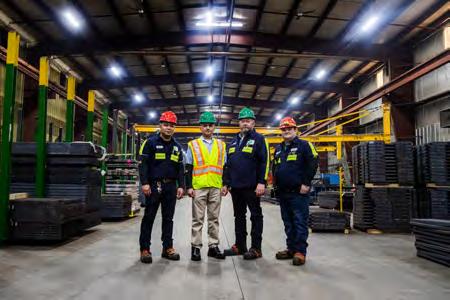



International executives reveal what’s driving their U.S. site decisions amid policy changes and workforce pressure
By Hector Ibarra, Team Co-Leader, Azad Khan, Principal, & Sven Gerzer, Principal at Parker Poe Consulting
Access to a qualified workforce, proximity to customers, unique real estate solutions, immigration hurdles, cultural fit, and yes — tariffs — are on the minds of executives considering foreign direct investment (FDI) in the U.S. right now.
Those takeaways come from recent conversations we have had with dozens of business leaders from around the globe, including at the SelectUSA Investment Summit in Washington, D.C. Hosted by the U.S. Department of Commerce, the summit brought together more than 5,500 professionals from over 100 international markets. (Our Business Expansion + Location Solutions team has a long history of helping executives explore U.S. investment opportunities at SelectUSA.)
You will not be surprised to hear that tariffs were a frequent topic of conversation. But you may be surprised by the range of responses from international businesses to the rapidly changing tariff framework. While some are taking a wait-and-see approach (such as several executives from Latin American countries), many from around the world had a sense of urgency about their U.S. expansion plans. Some European and Asian executives said the tariffs were in fact accelerating their investment decisions. However, having a framework and set of rules in place that won’t keep changing is a key requirement for most companies to move forward with their investment. Furthermore, it is crucial to consider that specific industry sectors will experience varying degrees of impact.
The bottom line for many executives, though, was that the sheer size of the market opportunity in the U.S. is the primary justification for undertaking an expansion in the country. While some begrudge the need to accelerate expansion plans due to ever-evolving U.S. trade and investment policies under the current administration, they still consider the U.S. a critical market for footprint expansion.
One executive, for example, shared how his company had long relied on a U.S. contract manufacturer. But after that relationship deteriorated, the company decided establishing a direct U.S. footprint was no longer optional — it was necessary for growth. Some other executives are considering entering the U.S. market indirectly through other countries such as Mexico, which is a practical choice due to its proximity and abundant qualified labor force.
One thing was consistent among those pushing forward and exercising patience: They want fully integrated legal and site selection advice from professionals who understand their culture, and they want it fast. Executives say the complexity of the global marketplace and the whiplash pace of policy change are making it more important than ever to receive collaborative, seamless support from their advisors.
Across nearly every conversation, access to a qualified workforce emerged as the number one gatekeeping issue influencing FDI decisions. The need spans industries, and companies are looking at both local and international labor pipelines to meet demand.
Some businesses expressed concern about the current state of U.S. immigration policy. While not always rooted in firm policy changes, these concerns are influencing expansion strategies. For instance, one oil and gas services firm based in Houston hires highly skilled engineers, many of whom are located in Central and South America. The company’s ability to quickly deploy this talent to U.S. energy operations hinges on timely visa processing and immigration support.
Another top-of-mind issue for international businesses is proximity to customers, especially in highly technical supply chains. Nowhere is this more evident than in the semiconductor sector.

Taiwanese companies, for example, are under pressure to be within an eight-hour response time to TSMC’s massive manufacturing operation in Arizona. This has led to a flurry of site searches across the Southwest, driven not by low-cost labor or incentives, but by logistics precision and customer proximity.
This need for responsiveness and integration is influencing site selection priorities across industries — from automotive to advanced electronics — and is driving investment to new regions that weren’t previously on the radar for some global companies.
Gone are the days when most international companies entering the U.S. market were simply looking for large, generic distribution facilities. Increasingly, companies are seeking specialized buildings and custom real estate solutions to support their manufacturing and R&D operations.
Some current searches can fairly be described as “needle-in-ahaystack” efforts — looking for facilities with highly specific infrastructure or the right balance of proximity, zoning, utilities, and talent. These demands reflect a shift toward long-term, operations-heavy investments rather than distribution-led market entry.
As a result, companies are relying more heavily on local partners who can navigate the intricacies of regional permitting, real estate availability, and incentives. The complexity of these searches further underscores the need for early and ongoing collaboration between site selection advisors, legal teams, and real estate professionals.
Not all states are equally open to international investment when it comes from specific countries. A Chinese industrial firm shared a common refrain: Most Southern states are currently less receptive to Chinese FDI. However, exceptions remain.
Executives say the complexity of the global marketplace and the whiplash pace of policy change are making it more important than ever to receive collaborative, seamless support from their advisors.
5,500
That’s the number of global professionals who attended the SelectUSA Investment Summit this year.
These geographic and political nuances are shaping FDI strategy in new ways. For international businesses, success now depends not only on choosing the right market — but on understanding statelevel policy dynamics, stakeholder relationships, and the competitive positioning of each potential location.
Global executives entering the U.S. market today face a mix of opportunity and volatility. Those who succeed tend to take proactive steps to mitigate uncertainty.
Some are pursuing tariff engineering evaluations to reduce duties through product design, supply chain sources, or classification changes. Others are building flexible contract provisions into their agreements that allow for adjustments in risk allocation, sourcing, or pricing. In addition, many companies are engaging in targeted lobbying efforts in collaboration with trade associations and industry groups to influence policy and protect their interests.
On the financial side, incentive packages from states and local governments are helping to offset capital and operating costs. Meanwhile, firms relying on imported components are exploring foreign trade zone (FTZ) designations to defer or reduce tariffs wherever possible.
Despite ongoing uncertainty around trade policy, immigration, and supply chain regulation, the U.S. remains a market of unmatched scale and strategic importance. For international businesses seeking sustainable growth, expanding in the U.S. is often not a matter of “if,” but “when and how.”
To navigate this environment, companies need more than just answers — they need partnerships. The most successful global companies are working with multicultural professionals who can deliver site selection, legal, and strategic planning in one cohesive process. W hether you are actively planning your next U.S. investment or just beginning to explore options, the time to evaluate your strategy — and your support team — is now.
Employers must modernize
their
programs if they want to
By Bartholomew Jae, Director of Training and Certifications
The skilled trades are becoming increasingly multigenerational, challenging traditional learning and development opportunities for leaders across the industry. In the first quarter of 2024, Gen Z made up 18 percent of the U.S. workforce, but 18- to 25-yearolds made up nearly 25 percent of all 2024 new hires in skilled trade industries. Furthermore, 47 percent of parents say their children have expressed an interest in pursuing a career in the trades, suggesting a potential Gen Z influx in the coming years.
As organizations look to recruit new workers to the trades, however, they must remain competitive and understand what Gen Z is looking for in a work environment. As the digital-native generation, technology plays a central role in their daily lives, and they expect technology to continue to shape their careers as they enter the workforce. Skilled trades leaders looking to attract and retain Gen Z workers, then, need to meet them where they are by embracing technology throughout the training process, rather than forcing conformity with outdated practices.
Gen Z has grown up in a digital-first world. Born between the mid1990s and early 2010s, technology has been at their fingertips from an early age—a key differentiator from other generations. Electronics have shaped their educational experiences, both in the classroom and across everyday interactions. As they transition to the working world, they’re looking to continue this digital trajectory throughout their career development. As such, employers who fail to understand how deeply ingrained technology is in the lives of Gen Z will struggle to attract and retain new talent.
Contrary to other generations’ belief that less experienced workers are unmotivated, lazy, and difficult to manage, members of Gen Z are highly motivated by professional development opportunities in the workplace. The problem at present, however, is that employers’ current training practices don’t align with what Gen Z is looking for in a work environment.
Print materials, long-form trainings, and lectures should be a thing of the past in this regard. Gen Z workers are looking for interactive, hands-on online resources that are more familiar with the material they’ve engaged with throughout their educational experiences. The dominance of social media in the lives of Gen Z means that they’re used to instant gratification and hyper-personalized
content. In the workplace, this translates to a need for learning that is fast, visual, and customizable.
Employers that view training as a box to check are also misunderstanding Gen Z. Given their demonstrated interest in professional development, they’re looking for their employers to invest in techenabled opportunities for continuous learning—in other words, they don’t view their onboarding experience as a “one-and-done” training process. To truly attract and retain Gen Z talent, skilled trades organizations need to demonstrate their commitment to ensuring long-term success and learning for their employees.
Developing digital-first training opportunities isn’t enough to attract Gen Z talent to the skilled trades—rather, employers need to understand what types of technologies will be most impactful and engaging for Gen Z workers. Attention spans are shorter than ever, meaning time is of the essence when it comes to creating effective training programs.
Employers should seek to implement a variety of technologies across their training offerings to demonstrate their commitment to meeting Gen Z where they are. Virtual and augmented reality (VR/ AR) trainings, for example, can offer skilled trades professionals an op-

Get actionable talent benchmarks, competitive intelligence, and firmographic data with JobsEQ technology or by working with our team of economic consultants.
Chmura’s consulting team, including Ph.D. and Blue Chip economists, can provide economic and fiscal impact studies, industry & labor market analyses, competitor benchmarking, and economic development & strategic planning. They can also help you draw your own insights through our powerful JobsEQ software platform. Learn more at www.chmura.com.
Access JobsEQ from anywhere, at any time.
Answer your research questions with guided prompts from JobsEQ.
Chat live with economists and get responses in under a minute.
Create custom regions, industry groups, occupation groups, forecasts, and more.
Tell your region’s story with clear maps and charts.

Forecast which industries and skills will be in demand in the future.

portunity to prepare for jobsite work in a low-stakes environment. VR allows workers to hone skills such as welding and operating machinery in a safe, virtual setting, while AR overlays instructions for physical tasks for greater accuracy and efficiency.
Mobile learning platforms are another excellent resource that allow workers to access short-form interactive training modules when it’s convenient for them. Whether it be a quick video refresher on safety protocols or a full lesson plan to hone a new skill, Gen Z prefers flexible, digestible learning opportunities that mirror the content they engage with outside of work, ultimately improving information retention.
One of the most important tools for today’s skilled trades workers is digital access to the building codes and standards that impact their day-to-day work on the jobsite. Rather than relying on printed manuals that may not have the most up-to-date information, platforms like NFPA LiNK® ensure workers have these critical resources at their fingertips. Digital platforms also allow users to quickly search for the information they need, as well as bookmark content to revisit at a later date.
Prioritizing tech-enabled learning and development opportunities
indicates a commitment to embracing change and innovation—exactly what the next generation of skilled talent is looking for. Nearly 80 percent of Gen Zers will seek out a new job if their current employer doesn’t offer opportunities for upskilling and continued career growth, which should be a major wake-up call for leaders across the skilled trades. To put it simply, if you’re not with the times, don’t expect your newer talent to stick around.
Access to digital-first training is indicative of a company’s investment in opportunities that their workforce will truly enjoy and appreciate. Employees want to feel like they are valued and appreciated, and old-fashioned training offerings signal the exact opposite. Embracing the latest and greatest technology, then, is about more than offering the most up-to-date training opportunities—it’s a key virtue signal for attracting Gen Z talent.
The skilled trades are undergoing a seismic shift as older generations increasingly move toward retirement. Employers must prioritize the tech-first needs of Gen Z professionals to effectively address this generational shift; otherwise, they risk dealing with a revolving door of new talent that won’t stick around long term.
To ensure the continued development of a resilient skilled workforce, it’s crucial for employers to not only embrace advanced technologies but also ensure employees have a clear path for skill development and internal mobility through continuous learning opportunities. Investing in the future of Gen Z professionals will cultivate a more engaged workforce and reduce turnover, ultimately driving innovation in the skilled trades.
A digital-first approach is key to addressing the generational transition; organizations that embrace and empower Gen Z talent will enhance their competitiveness while contributing to a more robust and skilled workforce ready to tackle evolving challenges. It’s not just about attracting Gen Z—rather, it’s important to create an environment where they feel valued, engaged, and excited about their future in the trades.













Continued from page 66

MABA calls for active forest and land management, including controlled burns, selective thinning, and wetlands restoration. These practices are designed to reduce wildfire risks, improve water retention in drought-prone regions, and enhance overall biodiversity.
For organizations in sectors such as insurance, utilities, and agriculture, these measures deliver tangible benefits: reduced exposure to catastrophic losses, more stable supply chains, and opportunities in carbon credit markets. By integrating ecological health with economic security, MABA provides a framework for climate resilience that aligns with private-sector interests.
Despite its collaborative tone, MABA has sparked debate due to its regulatory rollbacks. Critics argue that easing federal oversight could lead to inconsistent enforcement and undermine environmental protections, while supporters contend that incentive-based strategies will deliver results more efficiently than traditional compliance models and stimulate business and economic growth.
This policy shift introduces uncertainty. Companies that invest in voluntary stewardship programs today need to anticipate the possibility of future administrations reinstating stricter rules. The prudent approach would seem to be the adoption of hybrid strategies that embrace voluntary programs while maintaining systems that meet or exceed baseline environmental standards. Documenting measurable outcomes, such as restored acreage or reduced emissions, can also help mitigate reputational and regulatory risks down the road.
One of MABA’s strengths lies in its ability to build consensus across political and social divides. By prioritizing voluntary participation and local control, the initiative appeals to a wide range of stakeholders, including landowners, ranchers, hunters, anglers, and environmental advocates. This inclusive structure is designed, at least in part, to reduce the risk of litigation and abrupt policy reversals, providing a degree of stability that benefits long-term business planning.
MABA is more than a conservation directive; it is a strategic framework that links ecological resilience to economic growth. It positions the private sector as a key partner in restoring ecosystems, modernizing infrastructure, and unlocking new revenue streams tied to recreation, tourism, and climate adaptation.
Key opportunities for industry include incentives in agriculture and land use for habitat restoration and pollinator initiatives; contracts for construction and engineering firms in climate-smart infrastructure upgrades; increased demand in tourism and recreation for guides, lodging, and local services; and benefits for insurance and utility providers through lower disaster risk and improved resilience planning.
By virtue of MABA’s upside when viewed outside any political lens, the message for executives is clear: the initiative isn’t just about environmental protection; it’s about business opportunities, sustainable growth, competitive advantage, and resilience in an evolving economic and regulatory landscape.
Statement of Ownership, Management and Circulation. Publication Title: Area Development. Publication Number: 345-510. Filing Date: 10/1/2025. Issue Frequency: 4x. Number of issues publishedannually:4.AnnualSubscriptionPrice:$75.Completemailingaddressofknownofficeofpublication:30JerichoExecutive Plaza, Suite 400W, Jericho, NY 11753. Contact person: Dennis J. Shea. Telephone: (516) 338-0900. Publisher name: Dennis J. Shea. Editor name: Andy Greiner. 30 Jericho Executive Plaza, Suite 400W, Jericho, NY 11753. Owner: Halcyon Business Publications, Inc. 30 Jericho Executive Plaza, Suite 400W, Jericho, NY 11753. Stockholders owning or holding 1% or more of total stock: President Dennis J. Shea and Secretary Randi S. Shea. 30 Jericho Executive Plaza, Suite 400W, Jericho, NY 11753. Known bondholders, mortgagees and other security holders owning or holding 1% or more of total amount of bonds, mortgages, or other securities: None. Publication title: Area Development. Issue date for circulation data below: Q2 2025. Extent and nature of circulation: corporate real estate executives. Average number of copies of each issue during preceding 12 months: Total number of copies: 42,011. Legitimate paid/requested distribution: Outside country paid/requested mail subscriptions stated on PS 3541: 20,958. In-county paid/requested mail subscriptions stated on PS 3541: 0. Sales through dealers and carriers, street vendors, counter sales, and other paid/requested distribution outside USPS: 0. Requested copies distributed by other mail classes through USPS: 0. Total paid/requested circulation: 20,958. Non-requested distribution: Outside county non-requested copies stated on PS 3541: 20,071. In-county non-requested copies stated on PS 3541: 0. Non-requested copies distributed through USPS by other classes of mail: 0. Non-requested copies distributed outside the mail: 300 office copies. Total non-requested distribution: 20,371. Total distribution: 41,329. Copies not distributed: 682. Total: 42,011. Percent paid/requested circulation: 50.71%. Number of copies of single issue published nearest to filing date: Total number of copies: 41,493. Legitimate paid/requested distribution: Outside county paid/requested mail subscriptions stated on PS 3541: 20,904. In-county paid/ requested mail subscriptions stated on PS 3541: 0. Sales through dealers and carriers, street vendors, counter sales, and other paid/requested distribution outside USPS: 0. Requested copies distributed by other mail classes: 0. Total paid/requested circulation: 20,904. Non-requested distribution: Outside county non-requested copies stated on PS 3541: 20,289. In-county non-requested copies stated on PS 3541: 0. Non-requested copies distributed through USPS by other classes of mail: 0. Non-requested copies distributed outside the mail: 300 office copies. Total non-requested distribution: 20,589. Total distribution: 41,493. Copies not distributed: 0. Total: 41,493. Percent paid/requested circulation: 50.38%. Publication of Statement of Ownership for a requester publication is required and will be printed in the Q3 2025 issue of this publication. I certify that all information furnished on this form is true and complete: Dennis J. Shea, Publisher.

From maintaining the bottom line for small businesses to keeping the assembly line moving for our major industries, NV Energy is powering Nevada’s future.
Our economic development experts work strategically to facilitate business location and expansion within Nevada. We can assist with pricing and renewable tariffs, site visits and provide the data critical to making an informed decision for business investment in Nevada.
We know there’s a lot on the line. That’s why we’re always there to power it.




Learn more at nvenergy.com/econdev.
By Bradley Migdal, Executive Managing Director, Business Incentives Practice, Cushman & Wakefield
For a while, it looked like the golden age of industrial real estate. Institutional capital poured in. Developers raced to grab dirt. And everywhere you looked there was a new million-square-foot crossdock going up, most notably in the many markets across the U.S. that lack natural constraints. Big boxes, high clear heights, deep trailer courts, and lots of docks. Nobody stopped to ask, “What happens when demand moderates?”
The distribution party changed. We’ve certainly seen big-box industrial development abate over the past 18 months. Retailers are shifting, and some may not survive. Brands that went all in on just-in-time and e-commerce fulfillment have met their demands or have seen the return to brick-andmortar store fronts, and some occupiers have opted for build-to-suit development to meet logistics’ needs. Vacancy is climbing, though it’s back to historic averages versus the historic lows of the recent past. Spec buildings that once had bidding wars now may be available in some markets. And the real kicker? These buildings were designed for distribution and not easily adaptable for manufacturing.
The overhang wasn’t just about oversupply. It was about overconfidence in a single-use case. The market was moving at a torrid pace, and everyone was chasing the same pot of gold — a large big-box distributor. As rents reached historical highs — and some investors or landlords had unrealistic pro formas — many tenants seeking cost savings opted to consolidate operations from multiple buildings or geographies into one facility that was more efficient. Furthermore, some owners of big-box logistics facilities have demised their assets to meet the needs of occupiers seeking less than 200,000 square feet, with success. For manufacturing users, looking at available speculative warehouse and logistics product is similar to trying to fit a square peg into a round hole due to the complexity of manufacturing space needs.

players are starting to look at brownfield
Manufacturers are kicking tires on some of these sites. The logic makes sense: the buildings are there, the roofs are new, the locations are strong. But here’s the hard truth: converting a spec warehouse into a modern manufacturing plant can be just as difficult as building it to suit.
The challenges that seem to be in place are the fact that the power’s not there. The panel capacity, the switchgear, the transformers — all undersized. These
buildings were designed for forklifts and conveyor belts, not robotics, CNC machines, and fully automated pick lines. You can’t run a 24/7 high-load operation on a couple thousand amps.
It gets worse. Most developers and brokers speak power in terms of how many amps a building has on site. Manufacturers speak in megawatts. There’s a translation gap, and a lot gets lost in the middle. If you’re not careful, you walk into a building thinking it’s plug and play and end up waiting three years for the utility to build out the electrical service that is needed to operate your machinery and equipment.
It’s not just power. Column spacing, ceiling heights, floor loads, ventilation, loading — manufacturing has its own set of specifications, and most spec distribution buildings do not have those critical location factors. The few that come close? They’re gone fast. Everyone’s trying to retrofit the same handful of decent shells.
Smart players are starting to look at brownfield — the legacy sites and giant manufacturing facilities originally built in the 1950s or ’60s. Places that already had cranes, have substations on site, have rail spurs and laydown yard space. Sure, they need some TLC. But the bones are good, and they were built for heavy manufacturing.
The next wave of industrial growth may not only come from logistics demand for big-box spec. In many cases, it will be driven by highly specialized manufacturing campuses, built from the ground up or carved out of old steel and glass. You can’t fake a power supply. You can’t bolt on a rail spur. The fundamentals matter again. Before you fall in love with a shiny new box, ask the right questions. Who built it? What was it built for? What’s the true load capacity? And can it actually support what you’re trying to do?
Because if the answer is no, that pretty box is just another warehouse chasing a use case that is not compatible for a manufacturer





